Series Small Boats Annual 2007
A playful runabout
From Issue Small Boats Annual 2007
R ASCAL sped across the riffled waters of Long Island Sound. Her mahogany foredeck glowed from the depths of its varnish, and her stainless-steel cutwater sparkled through drops of water streamlining into mist. Driver and passenger sat low on a simple rolled leather seat, legs stretched out nearly parallel to the cockpit sole. A tall person could reach over the side and touch the water as it rushed aft at better than 50 mph. Memories of my first ride in RASCAL still raise goose bumps after 15 years.
At 15′ in length and weighing about 1,000 lbs with a full fuel tank and cockpit, RASCAL is a cheeky little boat— “pleasantly mischievous” is one of the ways Merriam-Webster’s Unabridged Dictionary defines the name—powered by a 60-hp Mercury outboard. If Colin Chapman had designed and built boats instead of Lotus automobiles, a boat of RASCAL’s character surely would have been among them—the Lotus Super Seven of the waterways.
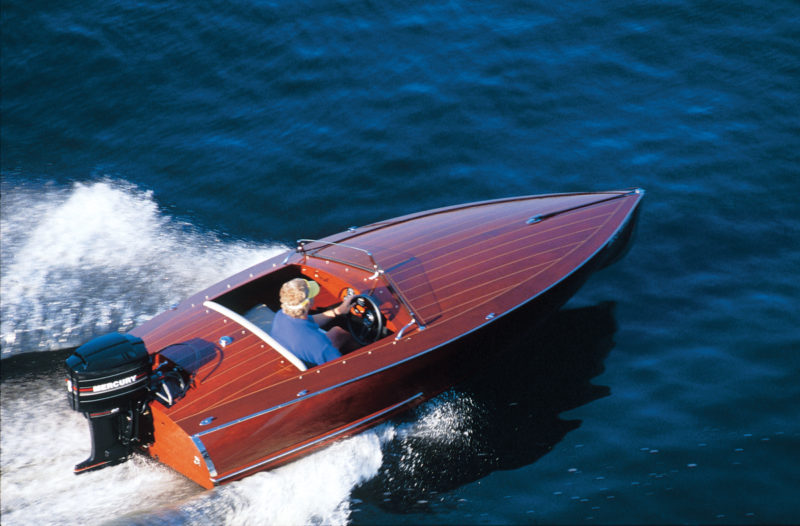
Rascal, a 14’10” outboard runabout that you can build in the backyard, strives to capture the cachet of big mahogany speedboats—without their mechanical complications and great expense.
Designed and built by Kenny Bassett, Onion River Boat Works, RASCAL offers more bang for the buck than just about any other runabout a father and son could build over several hundred hours of nights and weekends. They will build her of plywood—4mm for the topsides and decks, 5mm for the bottom—ripped into strips 1″ wide and laid diagonally over frames and stringers. That’s the easy part. If they want to capture the gloss and romance of traditional mahogany runabouts, they’ll plank the topsides with 1⁄ 4″ solid mahogany, perfectly lined off and set in epoxy. Although this method taxes the skill and patience of an amateur builder, it’s far from impossible. In fact, Tom Donahue, an electrical engineer living in Connecticut, recently completed a Rascal. Before this project, he’d built nothing more demanding than a couple of birdhouses. Donahue knows, maybe better than anyone, that whoever builds a Rascal must let patience guide them throughout the project, especially during the varnishing. The finishwork will likely require as much, or more, time than the construction.
The final result, though, is worth the wait. RASCAL rides atop a shallow-V bottom. Her steep entry warps into a flat run and ends at the transom in a deadrise of about 7 degrees. A delta-shape pad keel from station No. 2 aft to the transom provides a perfect planing surface, allowing RASCAL to make the transition from displacement speed to full plane in a single heave—absent the “hump” we associate with deep-V hulls and their slightly shallower modified-V sisters. Chine flats emerge from the waterline at station No. 4, which corresponds with the forward edge of the cockpit. They rise gracefully and embrace the stem about halfway up the bow, forming a line that plays with light and shadow to create visual interest forward of the cockpit. These chines also deflect spray.
RASCAL’s exceptional proportions mask her size when she stands alone in the slip or speeds across the water. Only when she’s parked next to a larger boat does she reveal her compact dimensions. The outboard’s power head, like a welt on the forehead of Julianne Moore, may diminish our first impressions from exquisite to merely beautiful, but familiarity ought to heal the wound. Bassett was aware of this possibility, so he painted the cowling of the outboard on hull No.1. A lustrous solid black accented by the name RASCAL in chromed script made the power head an integral part of the design, further defining the boat’s character and purpose.
I’d met Bassett at the Riverside Yacht Club in the town of the same name located two train stops east of Greenwich, Connecticut. He’d traveled from New Hampshire to demonstrate the boat to a prospective buyer and invited me to join him for a test drive afterward. Bassett fired up the three-cylinder Mercury, which was still warm from his demo, engaged forward gear, and idled us into the channel.
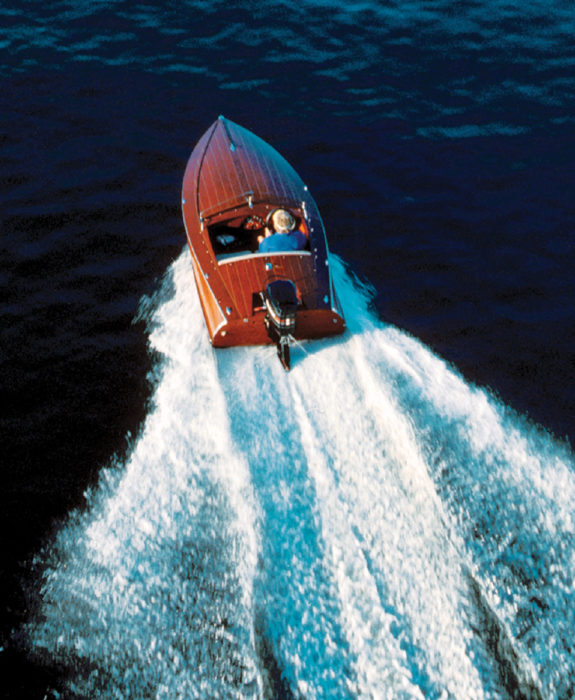
Powered by a 60-hp, Mercury outboard motor, RASCAL scoots along at better than 50 mph.
At rest and under slow way, RASCAL lightly tap-danced to the rhythm of cat’s-paws stirred by the breeze. This lateral motion is common to other runabouts I’ve driven and seems to be a characteristic of the bottom’s shape and the boat’s low center of gravity. I love this little dance, because it conveys a restless energy—the promise of speed. Most runabouts fulfill this promise, whether they are blindingly fast or simply pleasingly rapid.
Few powerboats involve us in their playfulness as completely as does a fine runabout, and RASCAL’s length and light weight intensify all of the sensations—save one: the rumble of an inboard engine, V-8, or straight-six barking epithets from the chrome tips of a through-transom exhaust. When I drove the original RASCAL, a 60-hp Mercury two-stroke outboard powered her, and I admit to being disenchanted by the ring, ding, ding voice coming from the transom. Sure, I knew better. I had road-raced two-stroke motorcycles in the late 1960s and early 1970s, and understood their potential to entertain the speed demon in all of us. I knew also that this lightweight outboard was the key to RASCAL’s personality.
Never mind Gar Wood’s neat 16′ Speedster inboard runabout or, to be more contemporary, Donzi’s lovely Sweet 16 sterndrive, only an outboard would give Bassett everything he wanted—simplicity of installation, ease of maintenance, purchase price, light weight and performance. Although outboard-powered classics never gained the cachet of their inboard sisters, they’ve written a richly colorful history for themselves in racing and more sedate forms of boating. In RASCAL, Bassett has combined the spirit of the all-conquering Switzer Craft hydroplanes and utilities with the look and presence of a Gold Cup raceboat.
After we cleared the mooring field and the no-wake zone, Bassett trimmed the outboard’s drive leg and pushed the throttle to the stops, sending us in a single rush to a speed of 50 mph. In the open water, RASCAL skimmed atop a foot or so of chop, doing her best imitation of a Lotus Super Seven tearing along a country lane in the north of England. Hard left, hard right, the little boat put her shoulder into the turns and carved perfect arcs. A tiny skid fin, at the leading edge of the planing surface and projecting to a depth of 2 3⁄4″ from the pad keel, helped RASCAL hold her line and speed in these turns. Without the fin, she would drift wide—her way of asking the driver to back off the throttle. We played until our faces ached with indelible grins and the electric tilt and trim on the outboard quit working.
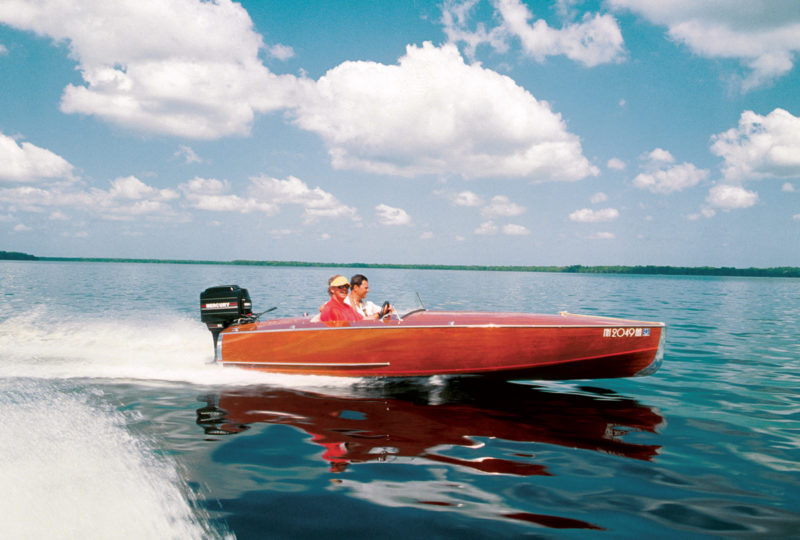
Designer-builder Ken Bassett drives RASCAL at speed. The playful runabout isn’t the easiest boat to build, but she rewards careful work with fine performance and head-turning appearance.
We met again later in the summer—this time on Candlewood Lake, near Danbury, Connecticut. This lake is an impoundment and is very narrow in many sections. Wind-blown waves and the wakes of powerboats bounce off the shorelines and march directly back toward the center of the lake. Picture the inside of a washing machine, the agitator of which moves rapidly up and down. Even during the week, motorboat traffic on Candlewood resembles the madness of I-95 between New Haven and Greenwich, so we looked for relatively quiet water to time her acceleration and top speed in fresh water. We recorded 2.7 seconds from 25 to 35 mph and a maximum speed of 52 mph.
My turn to drive. The cockpit is intimate, the steering wheel small, and the gauges are located in a panel at the center of the dashboard, similar to the arrangement in a 1952 Jaguar XK120. The seat is a paragon of simple design and construction, a pair of leather-covered foam cushions resting on nylon webbing. As drawn, the cockpit ought to accommodate a reasonable variety of human heights and widths. If I were going to build a Rascal, I’d figure out a way to make the seat adjustable fore-and-aft.
The unassisted cable-operated steering was quick, and RASCAL’s response nearly instantaneous. At first, the boat’s quickness startled me, so I eased back on the throttle until I got the feel of her handling. In those washing machine waters, she preferred staying on top of the conditions, so the faster we went, the smoother was her ride. RASCAL reacted predictably to changes in the outboard’s trim. Trimming in brought the bow down to engage the waves; trimming out raised the bow, transferring the load to her planing surface under the cockpit. She never porpoised, chine-walked, or tried to get airborne. One owner of a Rascal has clamped a heavily modified outboard onto the transom and regularly sees 70 mph. He has reported that she remains free of handling vices.
Like a pleasingly mischievous friend, RASCAL defies anyone to resist her charm, her playfulness, and friendly manners. She may not be the easiest boat to build, but rendering the two-dimensional drawings into all her wonderful three-dimensional shapes may make you as giddy as does driving her.
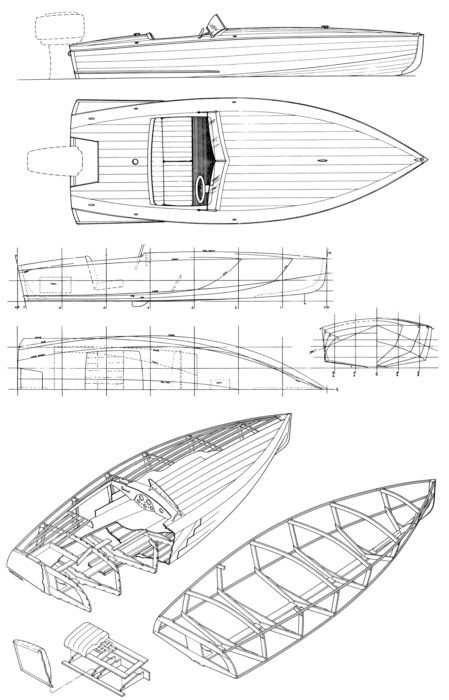
Ken Bassett retired and closed Onion River Boatworks in 2017; there are no plans available for RASCAL. The review is presented here as archival material.
Is there a boat you’d like to know more about? Have you built one that you think other Small Boats Magazine readers would enjoy? Please email us!
Share this article

Join The Conversation
We welcome your comments about this article. If you’d like to include a photo or a video with your comment, please email the file or link.
Comments (9)
I built Rascal in 1998. It was challenging but very rewarding and I also installed a 60HP Mercury. As I wanted to move on to other projects, I sold the boat. Some years later I completed a 26′ triple-cockpit runabout that I brought to a wooden boat show in Lake Hopatcong, N.J. where the same Rascal was on display!
Great article, inspiring. Thanks JP
I am currently building a Ken Bassett Rascal. I have talked to Ken several times for advice as well as the WoodenBoat community. Everyone was very helpful. I am a first-time boat builder with several years of WoodenBoat school classes to support my endeavor. I am enjoying the challenge. If you are building a Rascal boat or thinking about building, please reach out to discuss.
What do you estimate the cost of materials to be for this design? Could the boat be designed for two smaller outboards?
What a gorgeous little boat! I’m intending to build one as soon as I’ve finished fixing up a put-put I’ve restored, but the engine is a disaster. The Minister of Home Affairs has dictated this must be completed first! It’s called One Day which may give a clue to the directive. I’m in Australia, so talking with Ken may be an issue, is there an email address through which I could contact him?
A very dear friend purchased a Rascal that has the natural wood with a light-blue side accent color. What a pleasant surprise when he brought it to the lake. The gentleman who built it produced a fine piece of furniture. The workmanship is second to none. The wood absolutely glistens and the painted accent stands out. When he drives his Rascal along the shoreline, it has all of the embodiment of a classic runabout. The ride can only be stated as: EXHILARATING! You cannot appear graceful when boarding, but the payoff is a lot of fun on the water.
My dad built a 15′ Rascal in 1985 which we now must have valued for his estate. Would anyone be able to give me some idea as to the market value? It’s in excellent shape.
Where can I get plans for the Rascal?
The Rascal article was originally published in 2012 and we added this note to the end of it for this second appearance: Ken Bassett retired and closed Onion River Boatworks in 2017; there are no plans available for RASCAL. The review is presented here as archival material.
Leave a Reply Cancel reply
Your email address will not be published. Required fields are marked *
Stay On Course
More From This Issue
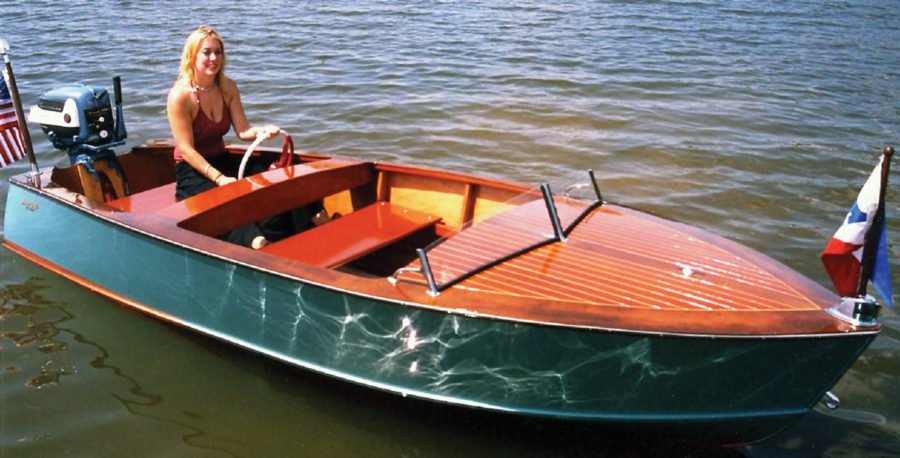
Small Boats Annual 2007
From the 2007 Small Boats Annual - Already a monumental success in 1950, Chris-Craft thought to use up their mountain of mahogany scrap by cutting kits for handsome plywood power…
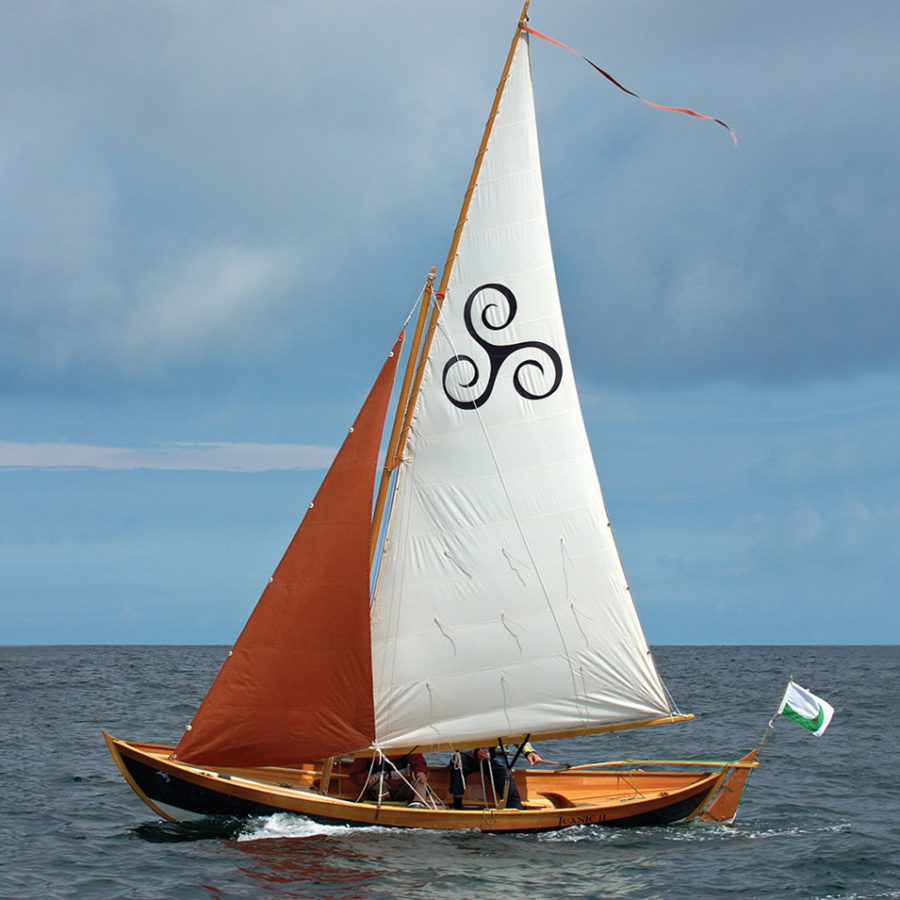
The Ness Yawl
From the 2007 Small Boats Annual - Few boats developed from a traditional working boat are as adaptable to small boat sailing as a Ness Yawl, and few are as…
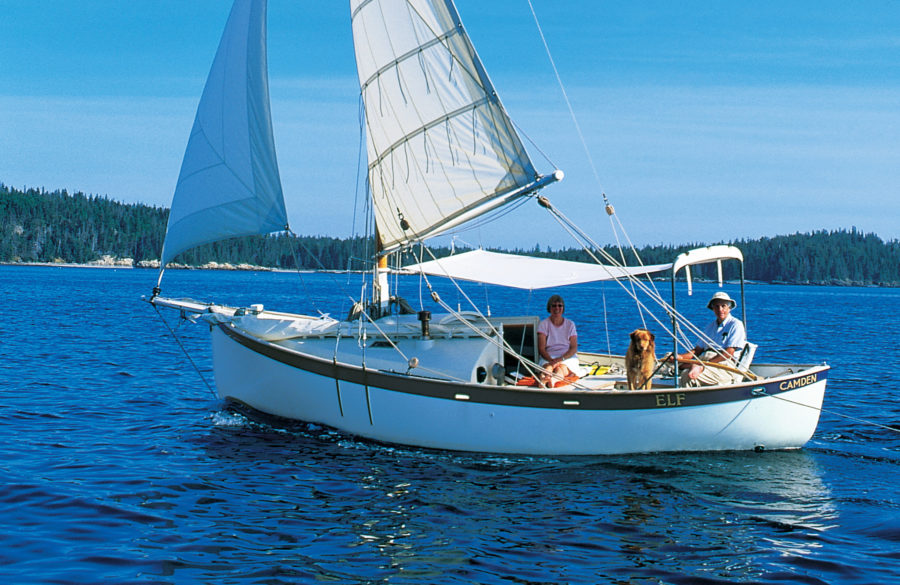
From the 2007 Small Boats Annual - Paul Gartside's plans for modest-sized cruising boats inspired by the Falmouth cutters of his native England should all come with one of those…
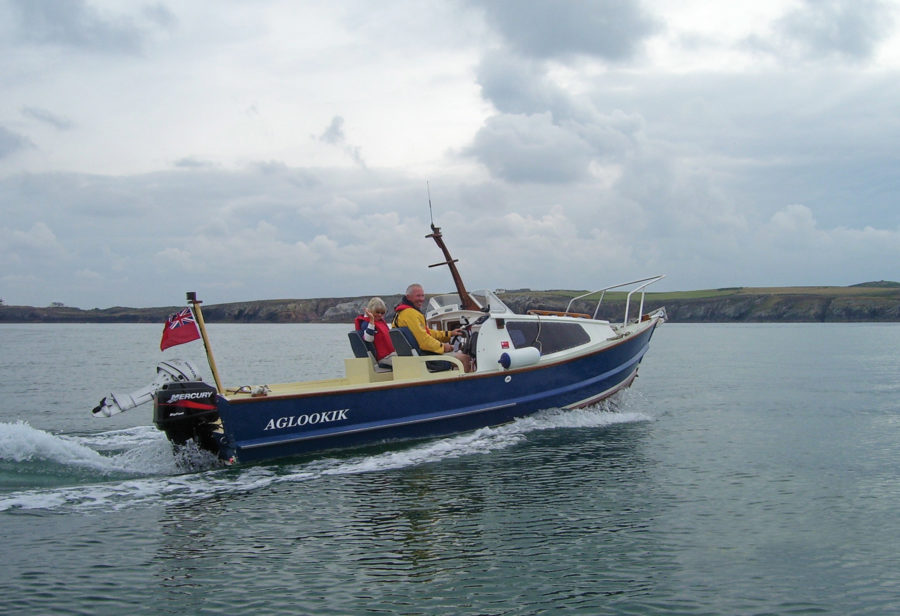
The Tolman Skiff
From the 2007 Small Boats Annual - Renn Tolman designed his eponymous skiff as a workhorse for rugged Alaskan environs. The boat has proven to be adaptable to a wide…
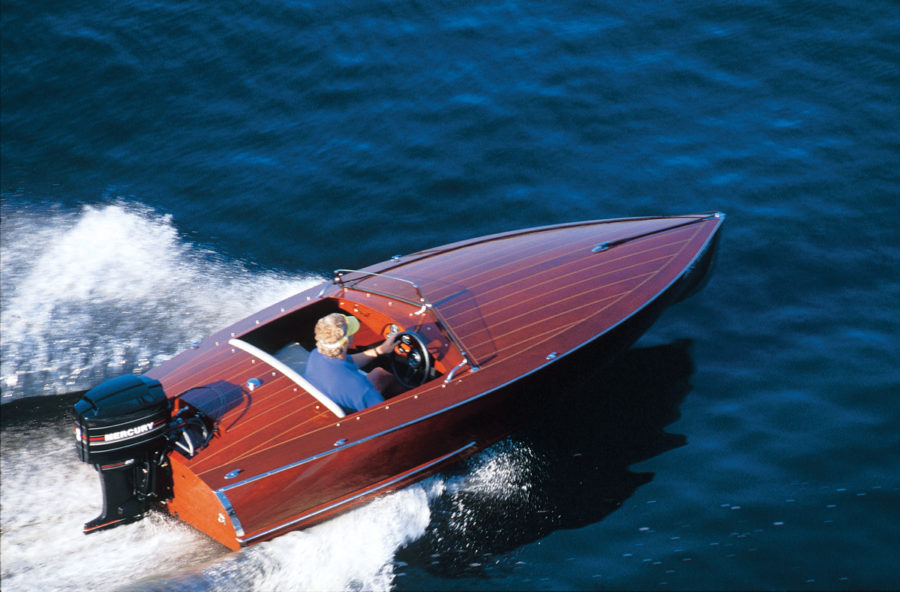
From the 2007 Small Boats Annual - RASCAL sped across the riffled waters of Long Island Sound. Her mahogany foredeck glowed from the depths of its varnish, and her stainless-steel…
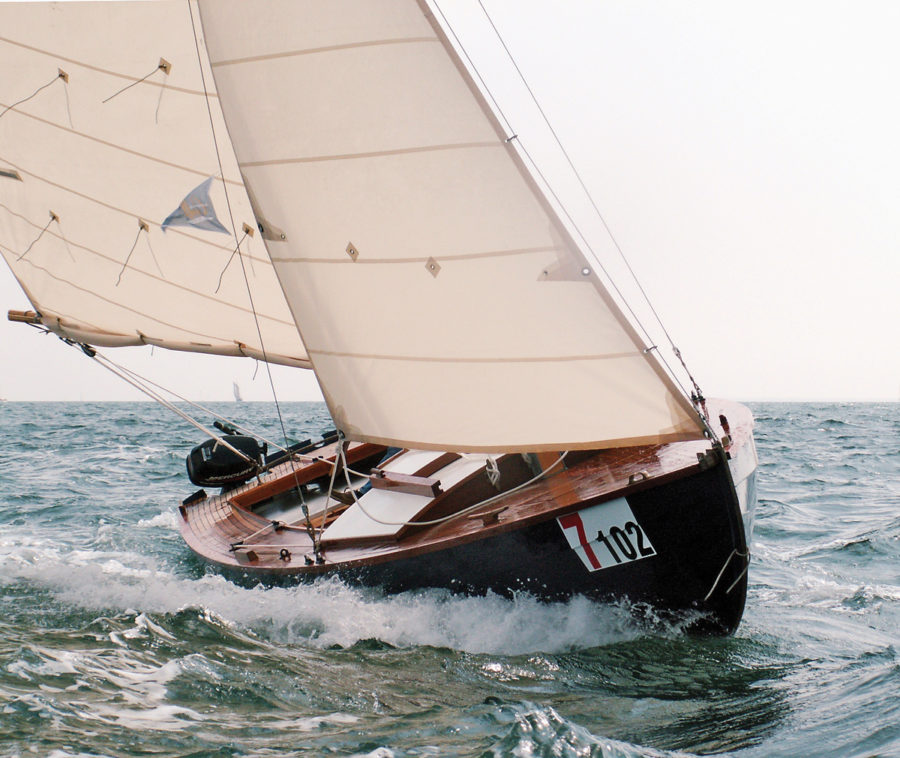
From the 2007 Small Boats Annual - With his Stir Ven design, a 22' LOA center- boarder, François Vivier took first place in the “neo-traditional” category of a 1997 design…
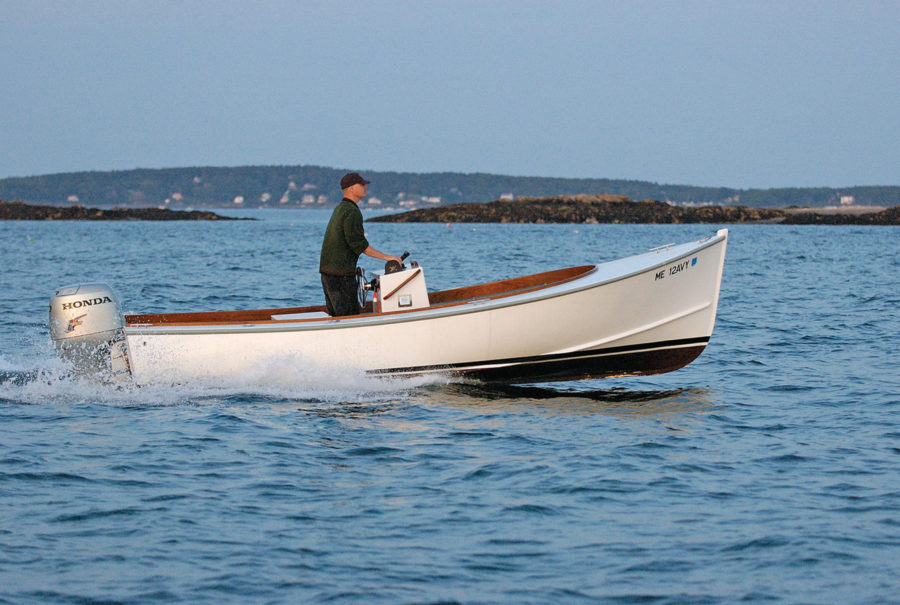
The West Pointer 18
From the 2007 Small Boats Annual - Six River Marine based this tough and shapely skiff on a highly regarded workboat designed and built by Alton Wallace. Chip Miller gave…
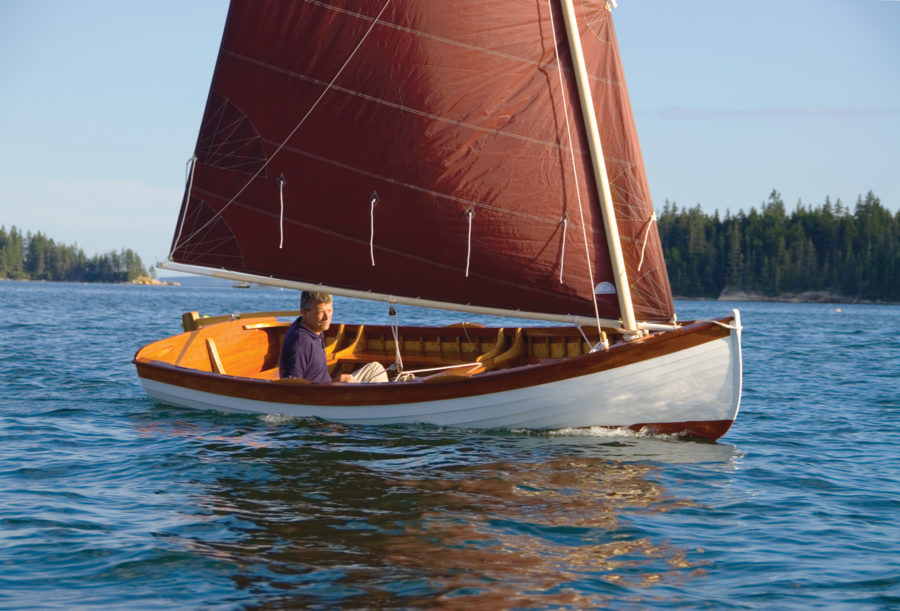
From the 2007 Small Boats Annual - Skylark was designed by Paul Gartside for day-sailing in the sporty estuary and ocean waters off the Oregon coast. With a 14' length…
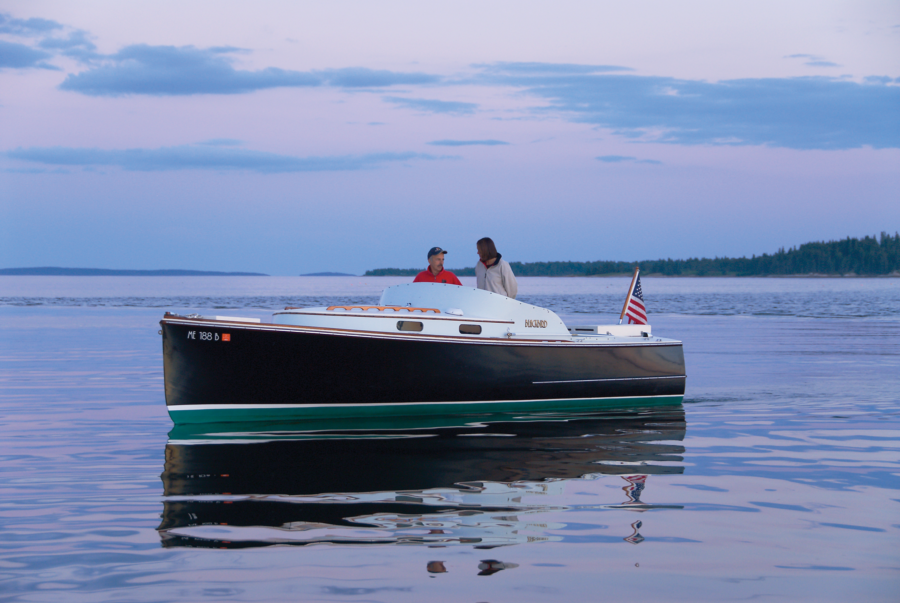
From the 2007 Small Boats Annual - Conceived in the early 1980s by Ken Bassett, Onion River Boat Works, and massaged into her final form by Phil Bolger, BLACKBIRD embodies…
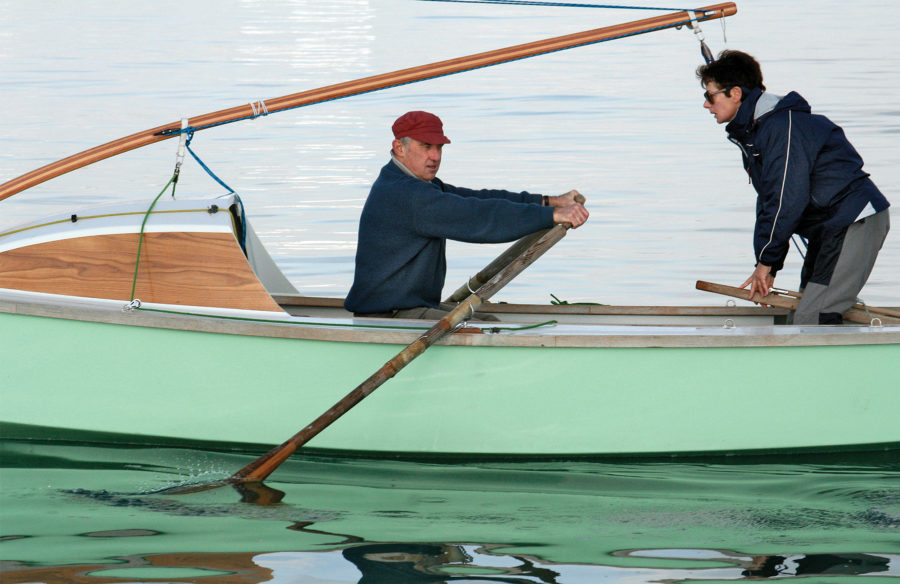
From the 2007 Small Boats Annual - PETITELISA is a synthesis of Gilles Montaubin’s long experience with sail-and-oar boats. Unlike many boats of this type, she is not reminiscent of…
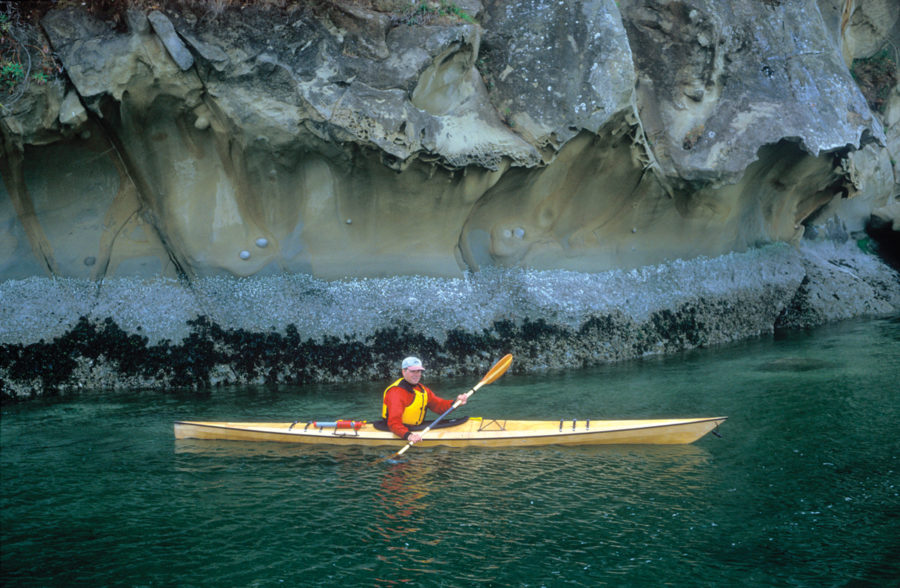
From the 2007 Small Boats Annual - People are always drawn to the warmth and the visual texture of a varnished wood kayak, but the beauty of a plywood kayak…
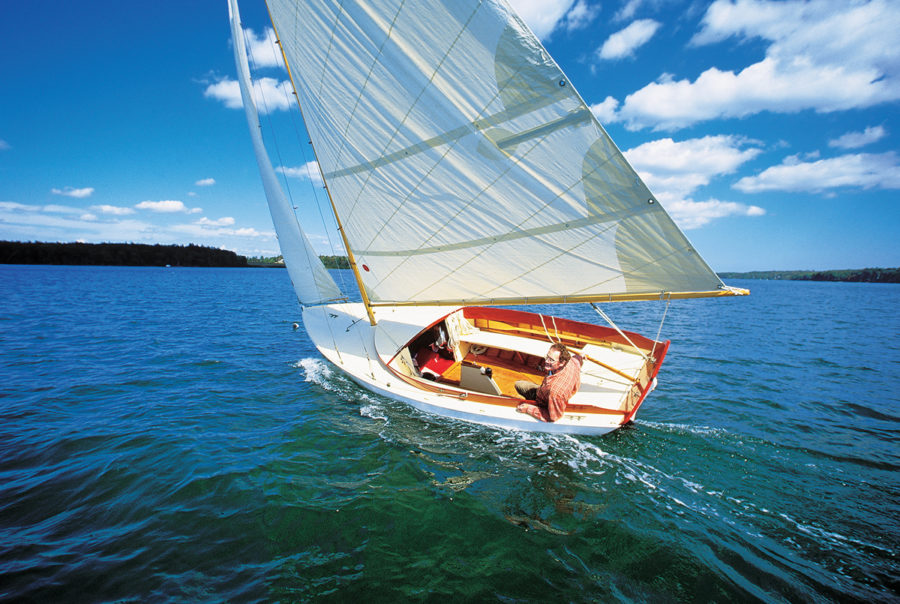
The Flatfish
From the 2007 Small Boats Annual - Every sailor has his own vision of the perfect daysailer. For many, this ideal boat is based on the Herreshoff 12 1⁄2, Nathanael…
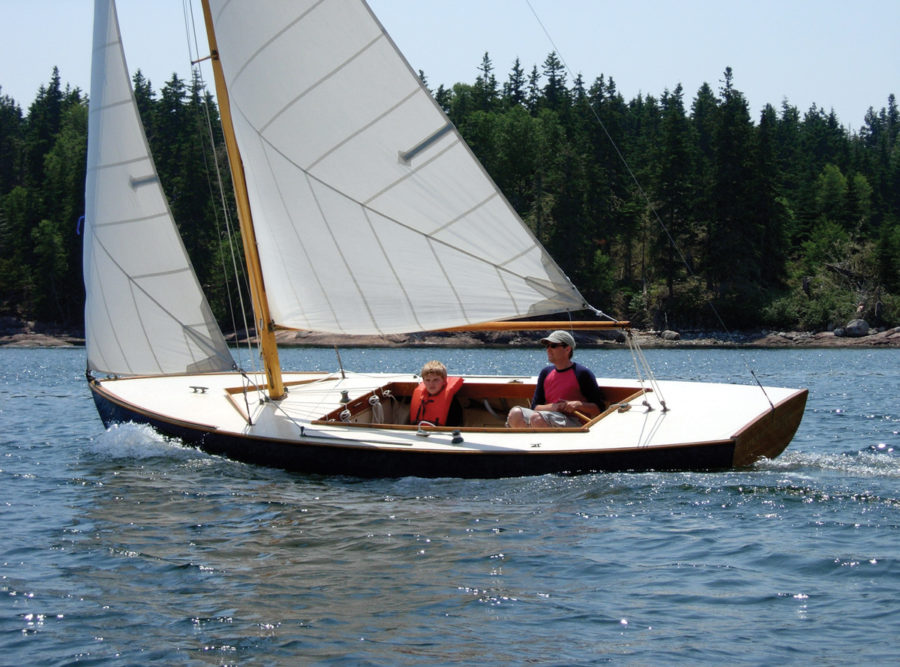
The Boothbay Harbor One-Design
From the 2007 Small Boats Annual - The Boothbay Harbor One-Design, a short-ended Burgess, moved to mid-coast Maine and hired Geerd daysailer with a long waterline, is a particularly handsome…
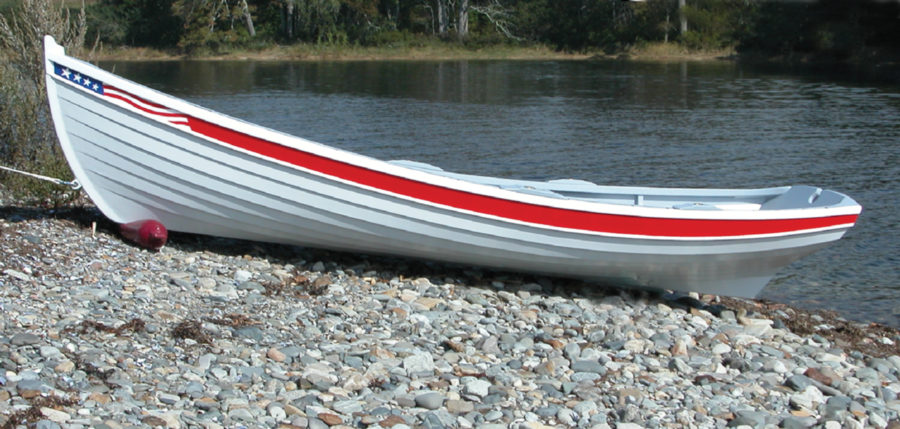
The Christmas Wherry
From the 2007 Small Boats Annual - The Christmas Wherry possesses two characteristics that should be critically important to anyone looking for a small boat to use in open waters.…
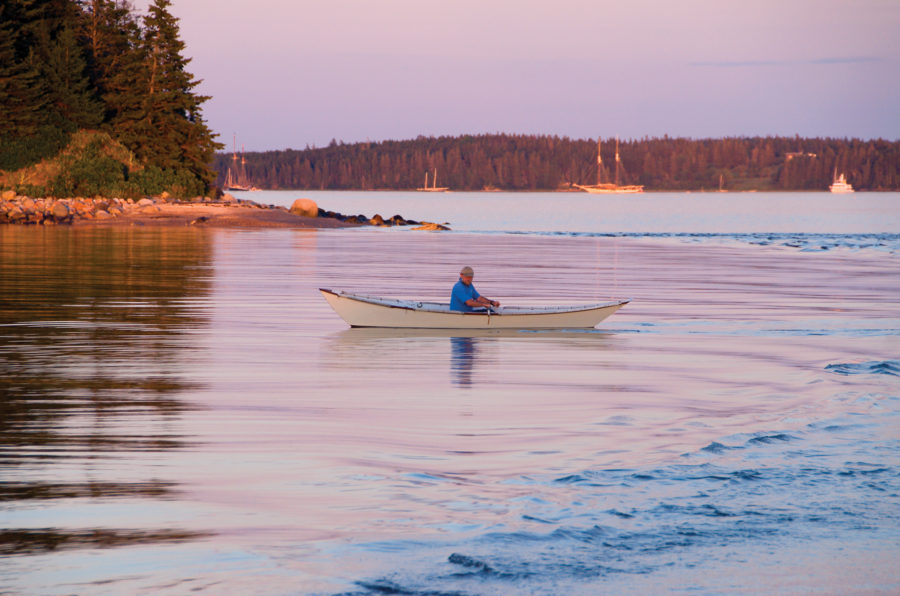
The Gloucester Light Dory
From the 2007 Small Boats Annual - In the early 1980s, I bought Phil Bolger’s plans for the 15′ 6″ LOA Gloucester Light Dory. I was living in an apartment…
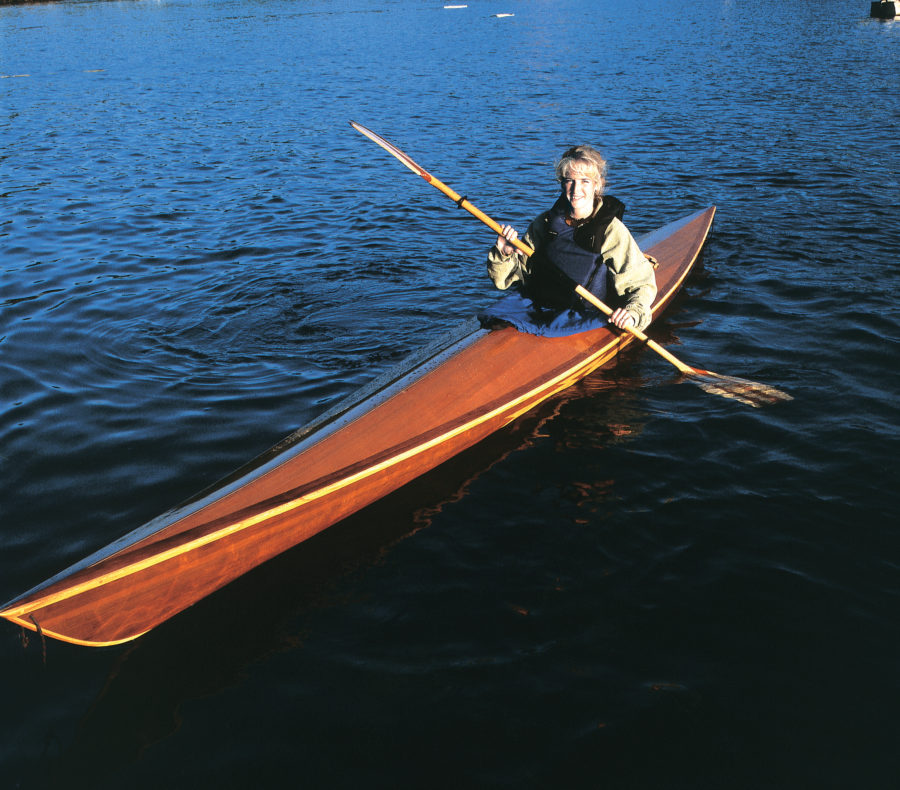
Endeavour 17
From the 2007 Small Boats Annual - The Steve Killing–designed Endeavour 17, a kayak built of cedar strip planks and fiberglass, combines beauty, fast lines, load-carrying capacity, and relatively easy…
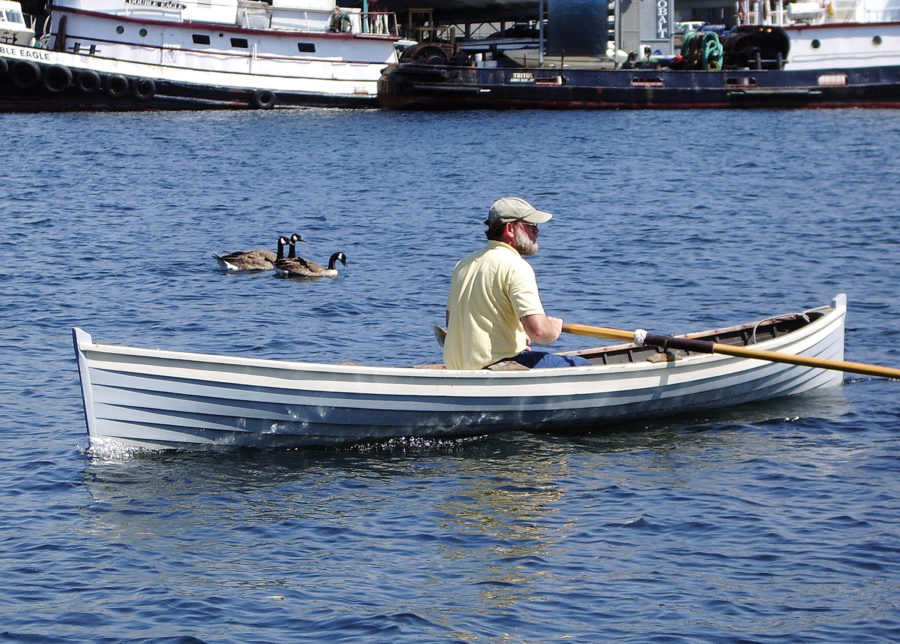
The Lake Oswego Boat
From the 2007 Small Boats Annual - Few joys in life are simpler than a morning row. Oars over the shoulder, hollow footsteps along a wood-decked float, the boat quivering…
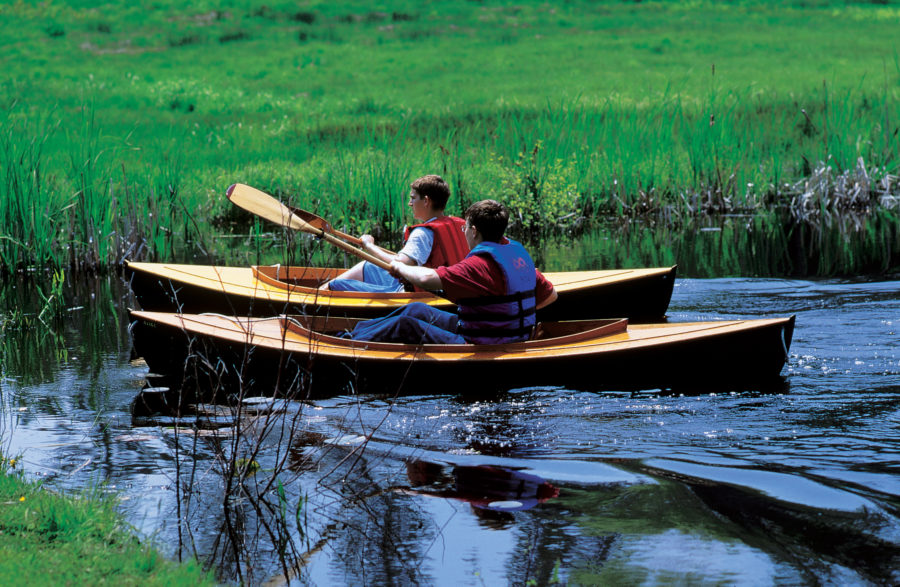
From the 2007 Small Boats Annual - Harry Bryan, a boatbuilder and designer from New Brunswick, Canada, designed the Fiddlehead, a 10 1⁄2' double-paddle canoe, in 1992 after his sister-in-law…
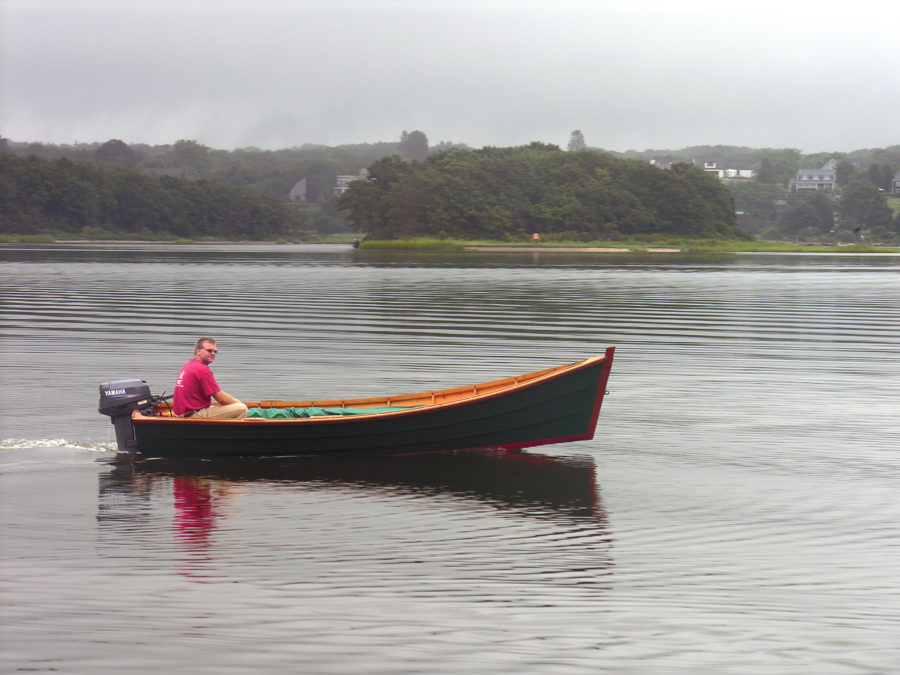
The Macomber 15
From the 2007 Small Boats Annual - You can walk across the Westport River in southern Massachusetts at low tide. It's a mile or so across in some places, but…
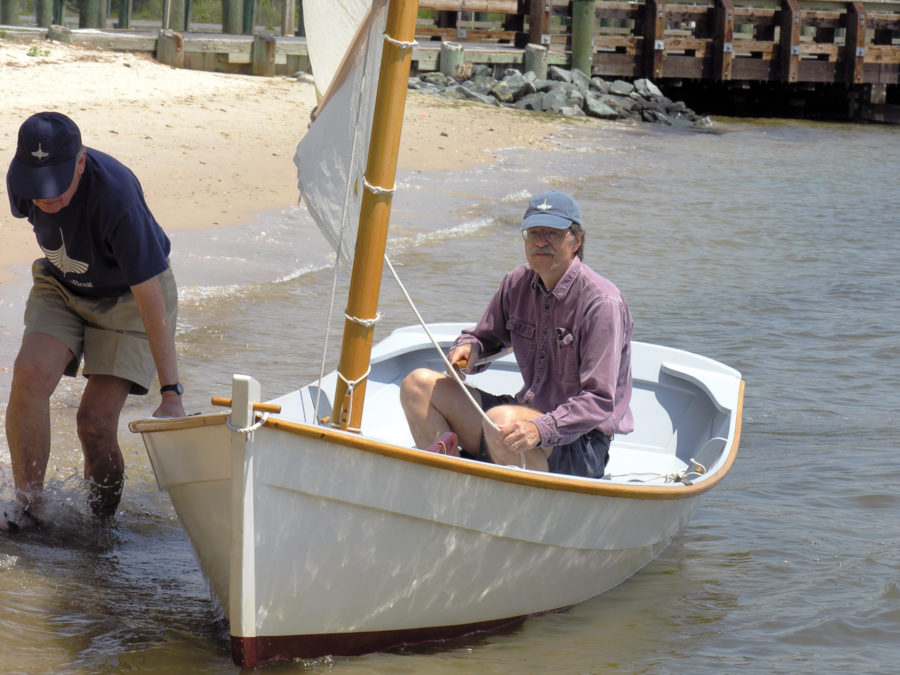
The Sailing Skiff 15
From the 2007 Small Boats Annual - All youngsters might begin their waterborne adventures in flat-bottomed rowing/sailing skiffs. Easy to build, but difficult to design properly, these honest little boats…
The WindSprite 26
From the 2007 Small Boats Annual - Frank Pedersen designed a light-displacement planing hull, and WINDSPRITE's abilities as a performance daysailer have been anything but a disappointment to him. With…
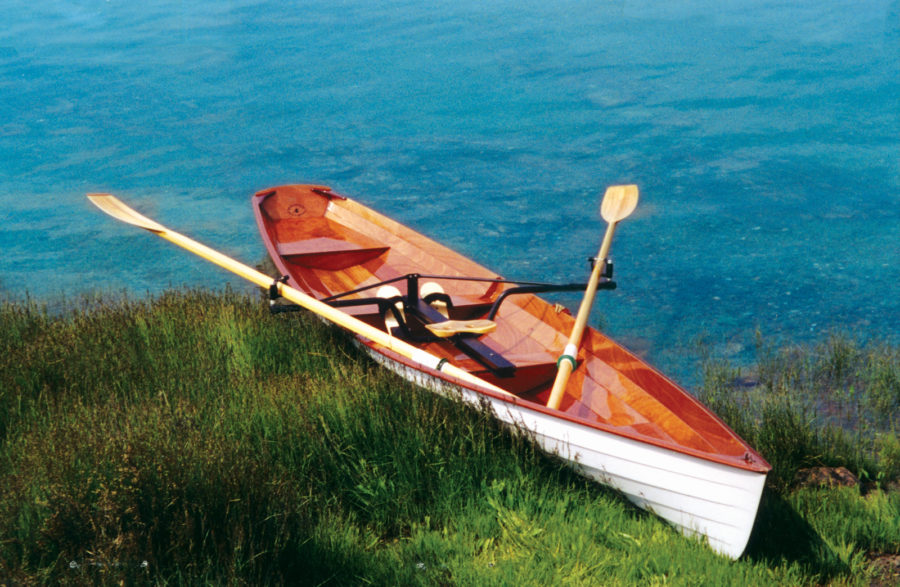
The Annapolis Wherry
From the 2007 Small Boats Annual - Faster than a typical skiff, yet more stable than a recreational shell, the light (65 lbs) Annapolis Wherry from Chesapeake Light Craft offers…
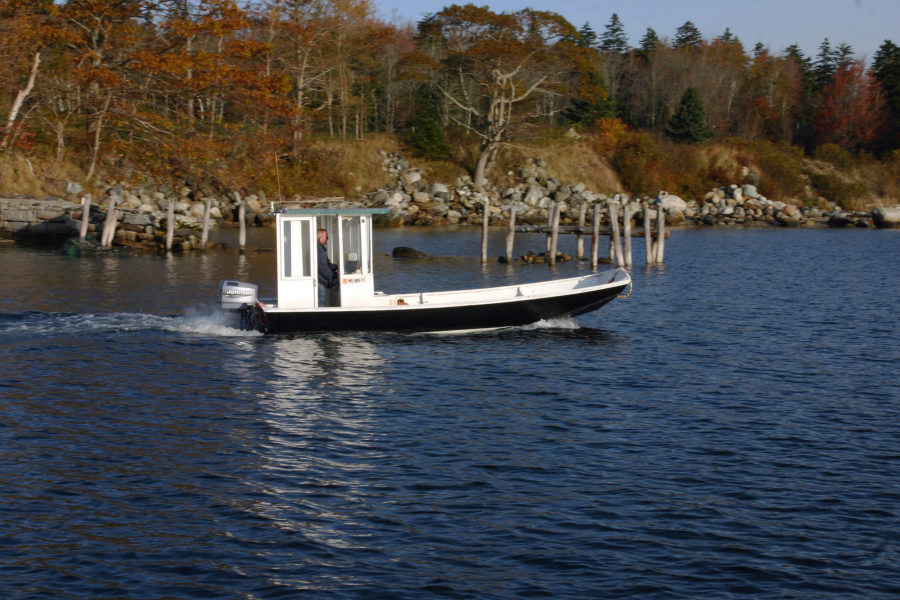
The Ben Garveys
From the 2007 Small Boats Annual - Boats don’t always need to have pointy forward ends. Here we have two easily built, square-ended workhorses that will handle all sorts of…
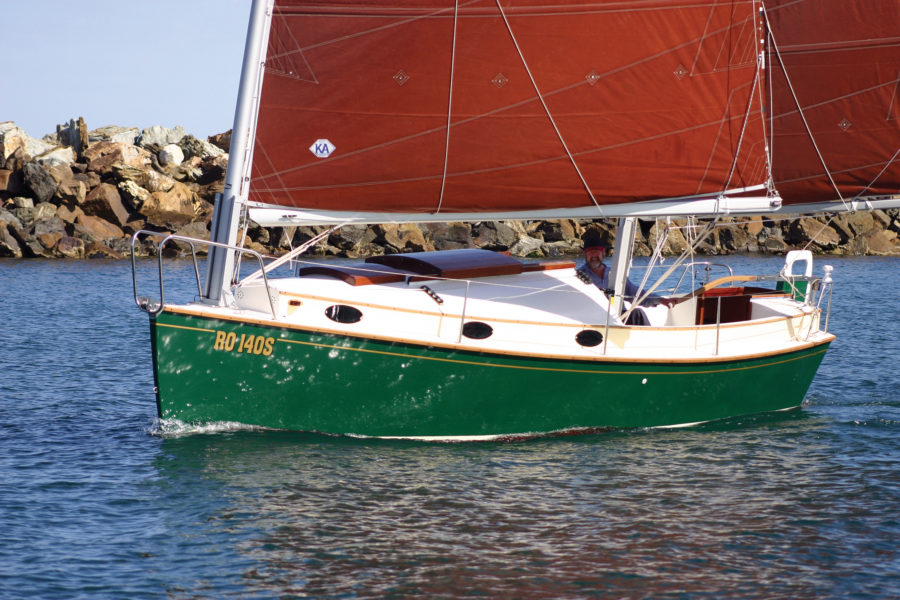
The Norwalk Islands 26
From the 2007 Small Boats Annual - The sheet-plywood Norwalk Islands Sharpie can easily be built in the backyard, yet it outperforms more expensive yachts. Its simple cat-ketch rig needs…
More SeriesSmall Boats Annual 2007
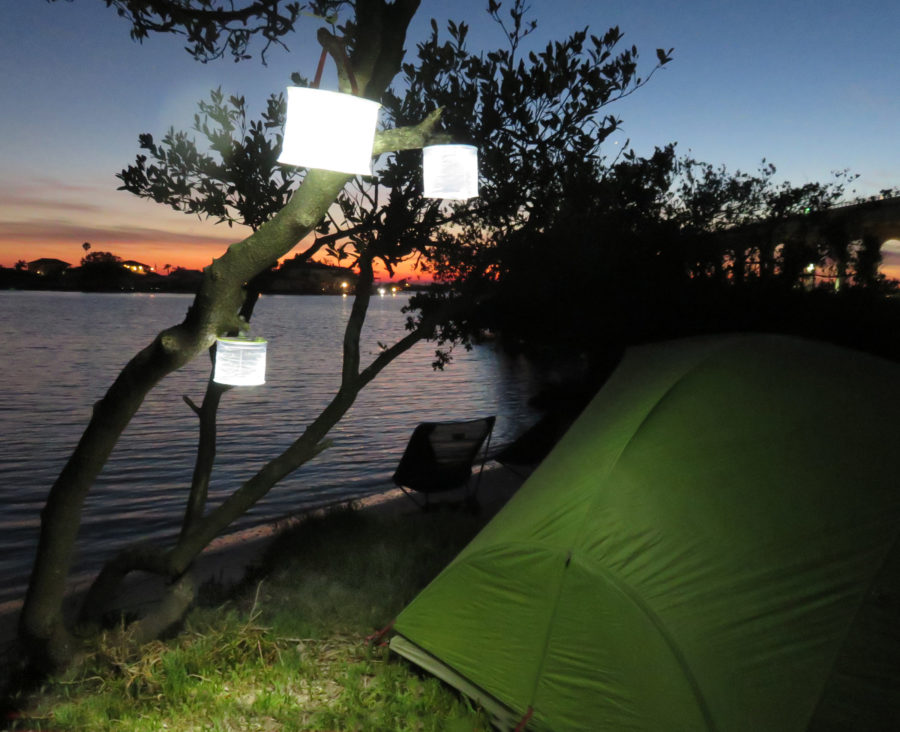
Product Reviews
Luci and LuminAID Lanterns
There are two popular brands of inflatable lanterns: Luci and LuminAID. These inflatable lanterns have some common features: they float and are waterproof, compact for storage, and self-supporting when in…
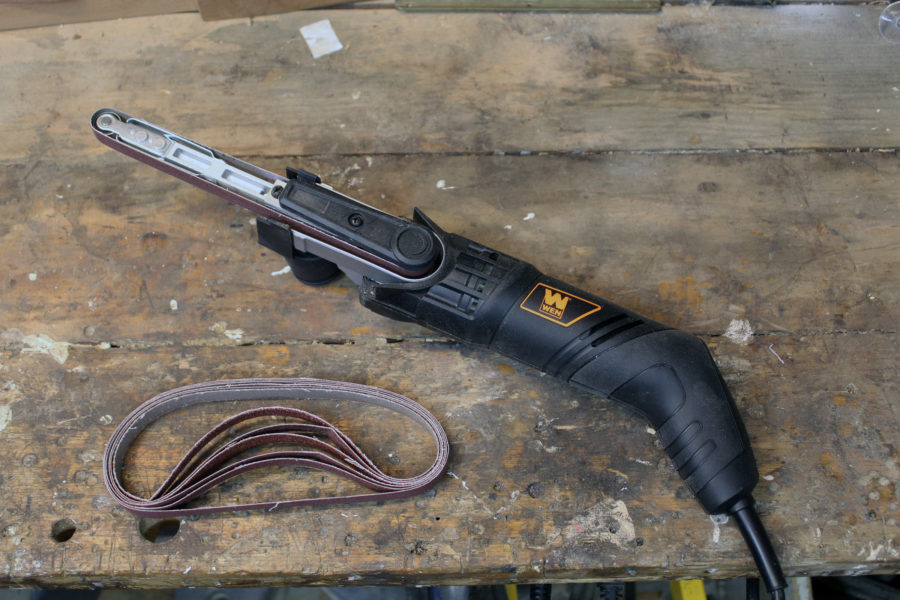
Wen Band File
Just behind the front roller there are two base plates, one on top, one on the bottom, that make contact with the sanding belt and back it up for working…
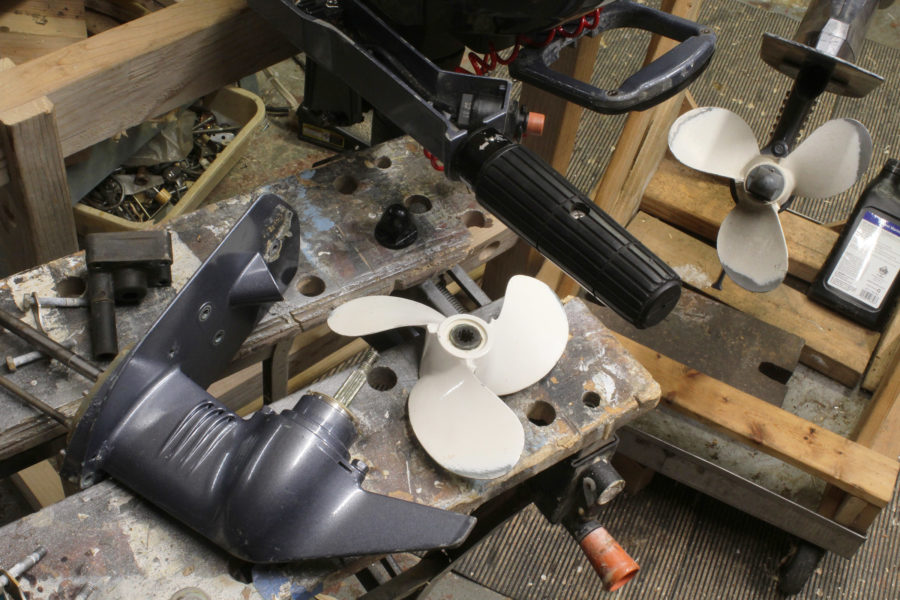
Outboard Winterizing
Putting the outboard away for the winter begins with some basic maintenance. Flush the cooling system as you normally would by running the motor with either the lower unit in…
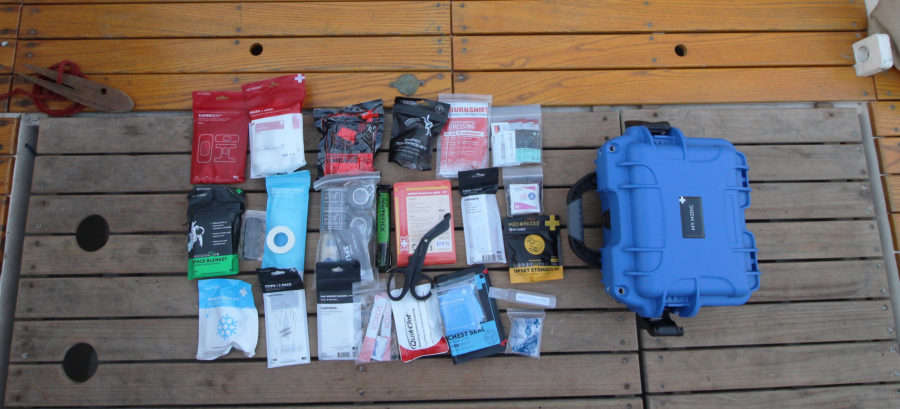
The Boat Medic first-aid kit from My Medic is well-thought-out and very well stocked and packaged. It should allow responders to render care for a wide range of injuries and…
Subscribe Today!
Become a subscriber today and you’ll recieve a new issue every month plus unlimited access to our full archive of backlogged issues.
Already a subscriber? Sign In
Subscribe For Full Access
Flipbooks are available to paid subscribers only. Subscribe now or log in for access.
ShortyPen.com
- Board Boats
- Day Sailors
- Pocket Cruisers
- Multihull Sailboats
- Contributors
- Shorty Articles
- Contact Shorty

Review of Rascal 14
Basic specs., sailing characteristics.
This section covers widely used rules of thumb to describe the sailing characteristics. Please note that even though the calculations are correct, the interpretation of the results might not be valid for extreme boats.
The immersion rate is defined as the weight required to sink the boat a certain level. The immersion rate for Rascal 14 is about 53 kg/cm, alternatively 302 lbs/inch. Meaning: if you load 53 kg cargo on the boat then it will sink 1 cm. Alternatively, if you load 302 lbs cargo on the boat it will sink 1 inch.
Sailing statistics
This section is statistical comparison with similar boats of the same category. The basis of the following statistical computations is our unique database with more than 26,000 different boat types and 350,000 data points.
What is L/B (Length Beam Ratio)?
Maintenance
This section shown boat owner's changes, improvements, etc. Here you might find inspiration for your boat.
Do you have changes/improvements you would like to share? Upload a photo and describe what to look for.
We are always looking for new photos. If you can contribute with photos for Rascal 14 it would be a great help.
If you have any comments to the review, improvement suggestions, or the like, feel free to contact us . Criticism helps us to improve.
Not logged in
- Create account
Engineering:Rascal 14
- Engineering
Page actions
- View source
The Rascal 14 is an American sailing dinghy that was designed by Ray Greene and first built in 1961. [1] [2]
The Rascal 14 design was developed into the slightly modified Rascal II. [1]
- 1 Production
- 3 Operational history
- 5 References
- 6 External links
The design was built by Ray Greene & Company in the United States . The company built 3,000 examples of the design starting in 1961, but production had ended by the time the company went out of business in 1975. [1] [2] [3]
The Rascal 14 is a recreational sailboat , built predominantly of fiberglass , with teak wood trim. It has a fractional sloop rig with black-colored, hard-coated aluminum spars and a tabernacle-mounted mast . The hull has a spooned plumb stem, a vertical transom , a transom-hung rudder controlled by a tiller and a retractable centerboard mounted in an enclosed trunk. It displaces 400 lb (181 kg) and can be fitted with a 160 sq ft (15 m 2 ) spinnaker . [1] [2]
The boat has a draft of 3.00 ft (0.91 m) with the centerboard extended and 11 in (28 cm) with it retracted, allowing beaching or ground transportation on a trailer . [1]
For sailing the design is equipped with a jib window and adjustable jib tracks. Foam flotation provides positive buoyancy and the boat has two storage lockers, one forward and one aft. [2]
The design has a Portsmouth Yardstick racing average handicap of 108.9 and is normally raced with a crew of two sailors . [2]
Operational history
Sail magazine named the Rascal a "breakthrough boat", due to its intended role for beginners and first-time boat buyers. [2]
- List of sailing boat types
- ↑ 1.0 1.1 1.2 1.3 1.4 McArthur, Bruce (2020). "Rascal 14 sailboat" . sailboatdata.com . https://sailboatdata.com/sailboat/rascal-14 .
- ↑ 2.0 2.1 2.2 2.3 2.4 2.5 Sherwood, Richard M.: A Field Guide to Sailboats of North America, Second Edition , pages 44-45. Houghton Mifflin Company, 1994. ISBN :0-395-65239-1
- ↑ McArthur, Bruce (2020). "Ray Greene & Co. 1947 - 1975" . sailboatdata.com . https://sailboatdata.com/builder/ray-greene-co .
External links
- Photo of a Rascal 14

- Add a new article
- Search in all topics
- Search in namespaces
- Search in categories
- Search using prefix
- About HandWiki
- How to edit
- Citation manager
- Formatting articles
- List of categories
- Recent pages
- Recent changes
- Random page
- Support & Donate
- Special pages
- Cite this page
User page tools
- What links here
- Related changes
- Printable version
- Permanent link
- Page information
Other projects
In other languages.
- This page was last edited on 9 July 2022, at 12:46.
- Privacy policy
- Disclaimers
Builder: Brooklin Boat Yard Launched: July 2020
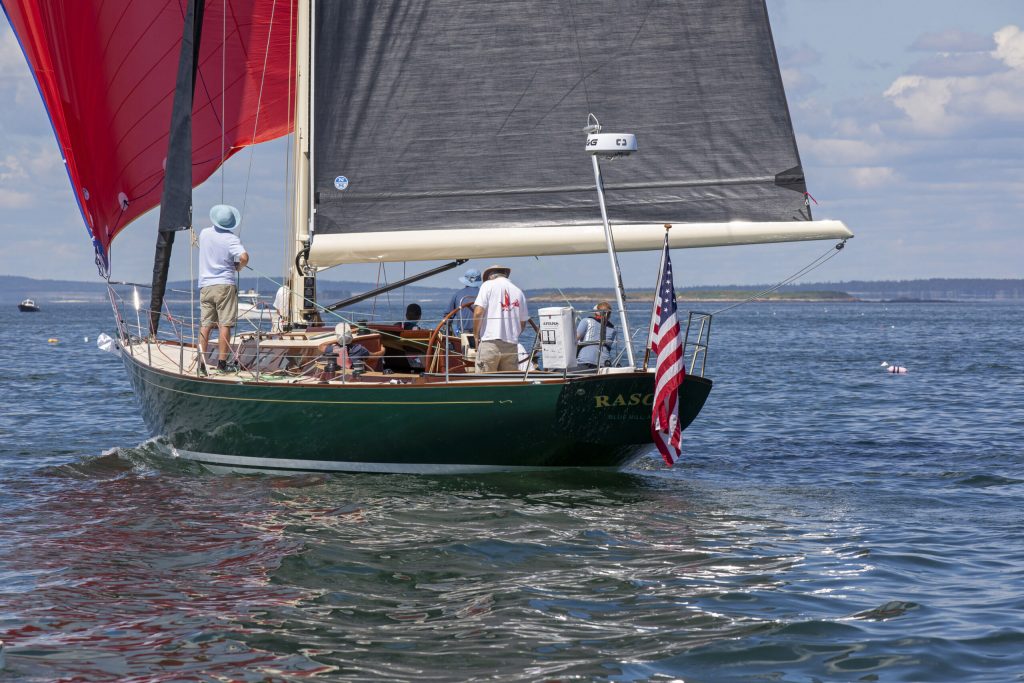
This new Brooklin Boat Yard-built, 50-foot, Jim Taylor-designed, racing / cruising sloop draws its lineage directly from previous Jim Taylor 49-footers DREADNOUGHT and BLACKFISH. RASCAL has enough in the way of evolutionary design changes and direction of sailing focus to warrant placing RASCAL in its own species, genus, and name within the sailing world.
While evolutionary changes and sailing focus of BLACKFISH were to make her more dedicated to straight-up racing than her predecessor DREADNOUGHT, for RASCAL the evolutionary coin has been flipped with a return to — and even more focus on — ease of sail, comfort, and “cruisability.”
Probably the biggest and most notable evolutionary design change is the addition of 2 inches of topside freeboard and subsequent 1.5-inch addition to the height of the deck house.
From the outside these changes aren’t immediately evident as RASCAL’s graceful lines, dark green hull, and varnished mahogany house sides, cockpit coamings, and toe rails keep the exterior appearance very similar and visually near to the proportions of her older sisters.
Where these extra inches really come to the forefront is down below with additional overall space, comfort, and headroom, the latter of which is greatly appreciated by RASCAL’s owner and his family who all tend (through their own human evolution) towards the tallish side.
To make RASCAL easy to handle, she has a well laid out cockpit with all sail control lines close at hand, all powered winches, electrically powered traveler, and a Bamar mainsail in-boom furling system. The spar and rig package is from Offshore Spars and the sail package is by North Sails.
Much can be made about the comfort and “cruisabilty” of RASCAL. However, like her older sisters (DREADNOUGHT and BLACKFISH), RASCAL is a force to be reckoned with when she does show up at the starting line. We won’t be surprised to see her at the top of the leader boards in this next (and future) racing season here on the coast of Maine and farther afield.
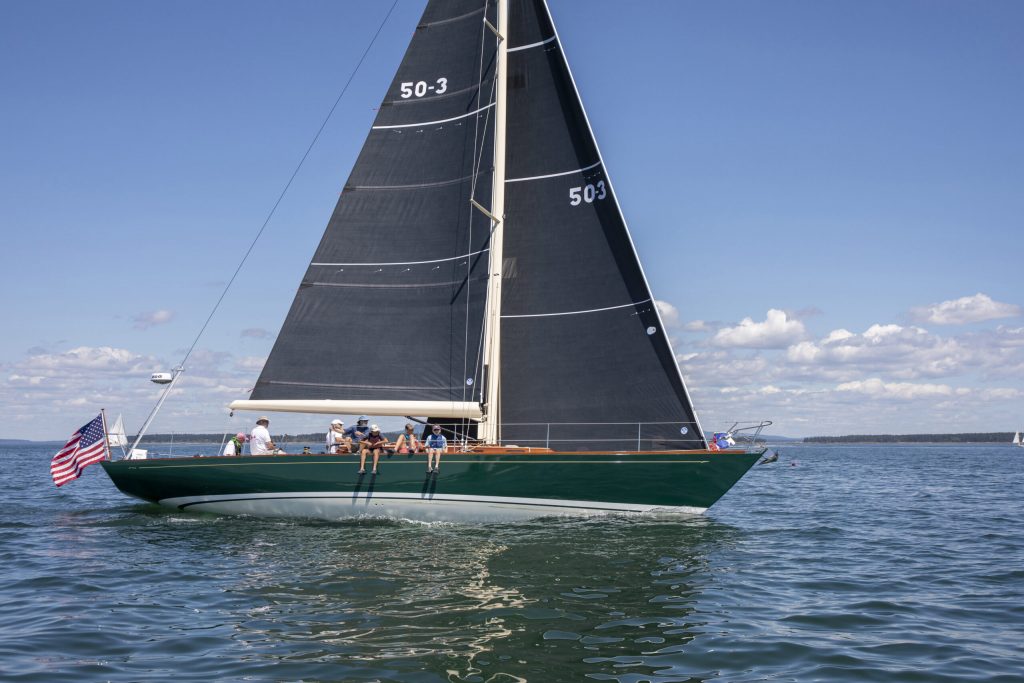
Building, restoration, and repair with epoxy

The RASCAL Project
By steve gembrowski.
Cover Photo: Steve Gembrowski spent 10 years building the Ken Basset designed RASCAL, a mahogany runabout.
Fifteen years! Not that it took 15 years to build; it was more like a year and a half. I first saw a photograph of RASCAL and decided right then, if I ever build a boat, this is the one. RASCAL was a new design by Ken Basset for a modified V-bottom 14’10” runabout with a beam of 5’4″ and hull weight of 420 pounds. For the next 15 years, RASCAL became one of those projects sitting on the back burner, waiting until I had enough time and money to comfortably build her without having to compromise on engine, equipment or material. I’m sure plenty of builders out there can relate. My first step was to set the standard to which the boat would be built. Considering the time and money investment, the boat design, and the need to push my own skills, I set the bar high: Van Dam quality should do it. Van Dam Custom Boats is a builder of fine mahogany boats in Boyne City, Michigan, whose 100 mph, 32′ runabout, Alpha-Z , was featured in a cover story in Epoxyworks 14 .
Pre-coating Rascal’s components
From the beginning, I sanded and triple-coated all components with WEST SYSTEM® epoxy prior to assembly. This process seemed to take forever, but I can only imagine the nightmare it would have been to coat and sand around all the frames and stringers, all those tight little areas up in the bow, while standing on a milk crate and bending over the sheer rail. Then to repeat it three times. The whole project would have ground to a halt right there. Pre-coat. You’ll save time in the long run.
I purchased LVL (Laminated Veneer Lumber, which looks like plywood 2×10) from the lumberyard to use as a strongback, set up the framework, and then turned my attention to the 120+ notches that would need to be cut in the frames to accept the Sitka spruce stringers. I made up a simple jig, a plywood plate approximately 4″×6″ with a rectangular hole cut in the center. The opening in the plate was centered over the notch location and screwed to the edge of the frame. I placed a guide bushing on my plunge cut router, adjusted the depth, and cut each notch in three passes.
Back-up blocks were clamped to each frame to avoid chip-out. If you bevel the frames first, the bottom of each notch will automatically be cut to the same angle. However, I chose not to do this at this time and used a chisel to bevel the bottom of each notch, using the stringer as a guide. I also used this method to cut the notches in the white ash stem. After a little practice, I found I could install a complete stringer in about 25 minutes. Since the stringers were so closely spaced, I faired the entire framework with a board sander and an 8″ Dual Action (DA) sander with 40-grit, then 80-grit sandpaper. Then I coated all contact surfaces with epoxy.
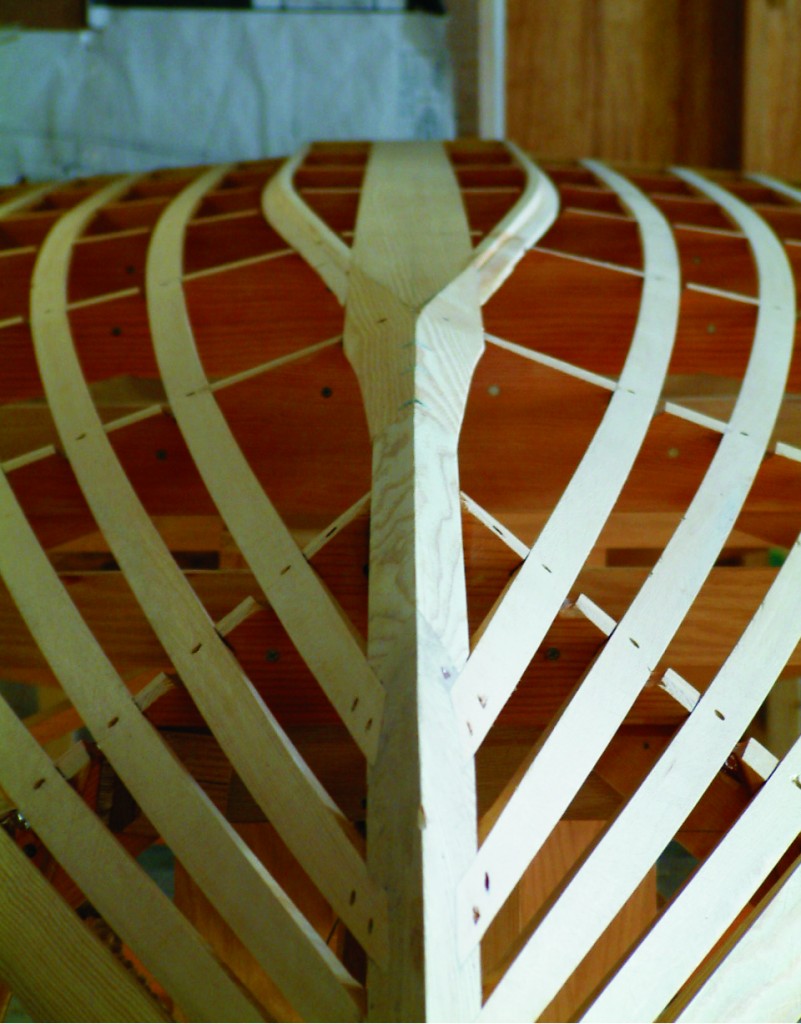
Rascal’s framework is faired and ready for plywood. Frames and stringers were coated and sanded before they were assembled.
Installing plywood
The bottom was covered with ¼” okoume plywood and the topsides with 1 8″ okoume plywood.
This layer was epoxied and stapled in place with ¼” crown staples. I shot each staple through a piece of braided nylon handling material (used to band lumber together for shipping). This allowed for quick staple removal by simply grabbing the tail end of the strap with a pair of pliers and giving a quick sharp tug 90° to the hull surface. Caution: wear your safety glasses as some of the staples will go flying. I again faired the hull and applied two coats of WEST SYSTEM epoxy.
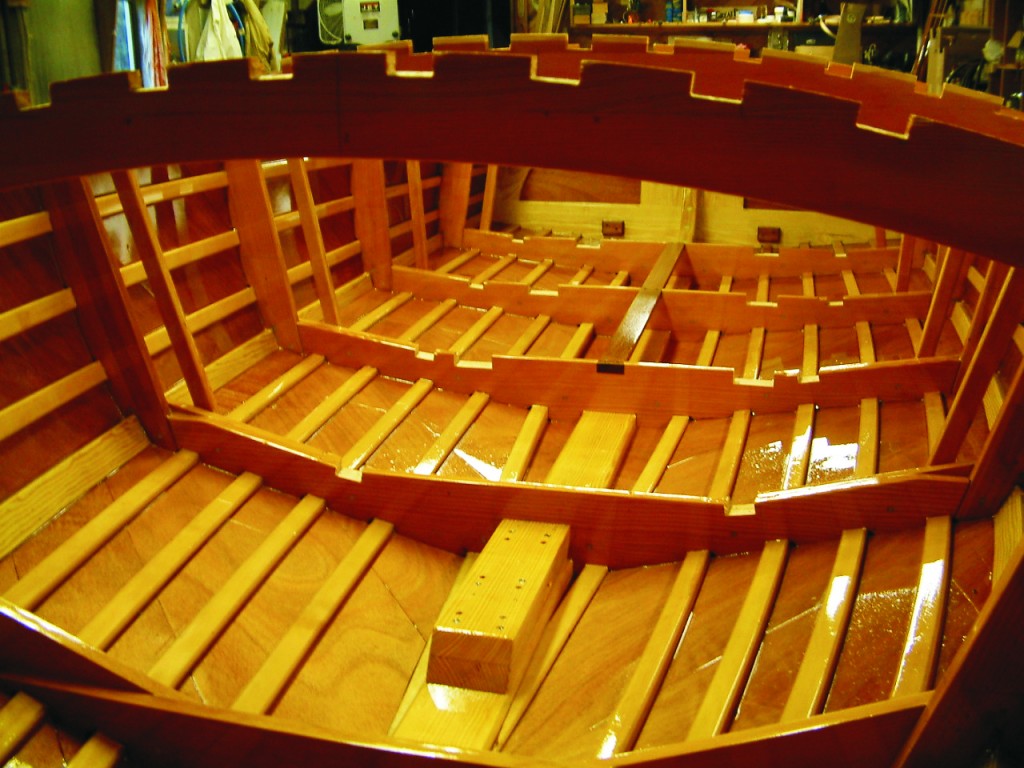
The finished hull interior before the floor and deck were installed. The bottom was covered with ¼” okoume plywood and the topsides with 1 8″ okoume plywood.
Vacuum bagging the mahogany planks
Now the hull was ready for the ¼” Philippine mahogany. The plans called for the planking to be stapled along its edges approximately every 3″. In my mind, I envisioned a wooden boat that looked as though it had been assembled on a giant sewing machine. The next best thing was to try to match up about a thousand hole plugs, still not what I was looking for. I wanted a blemish-free surface totally free of fasteners. The only way to clamp the planking without making any marks was to vacuum bag it in place. Great…sounds simple enough, but how to bend the plank and hold it in alignment while setting up the vacuum? I would have to devise some type of non-penetrating fastener.
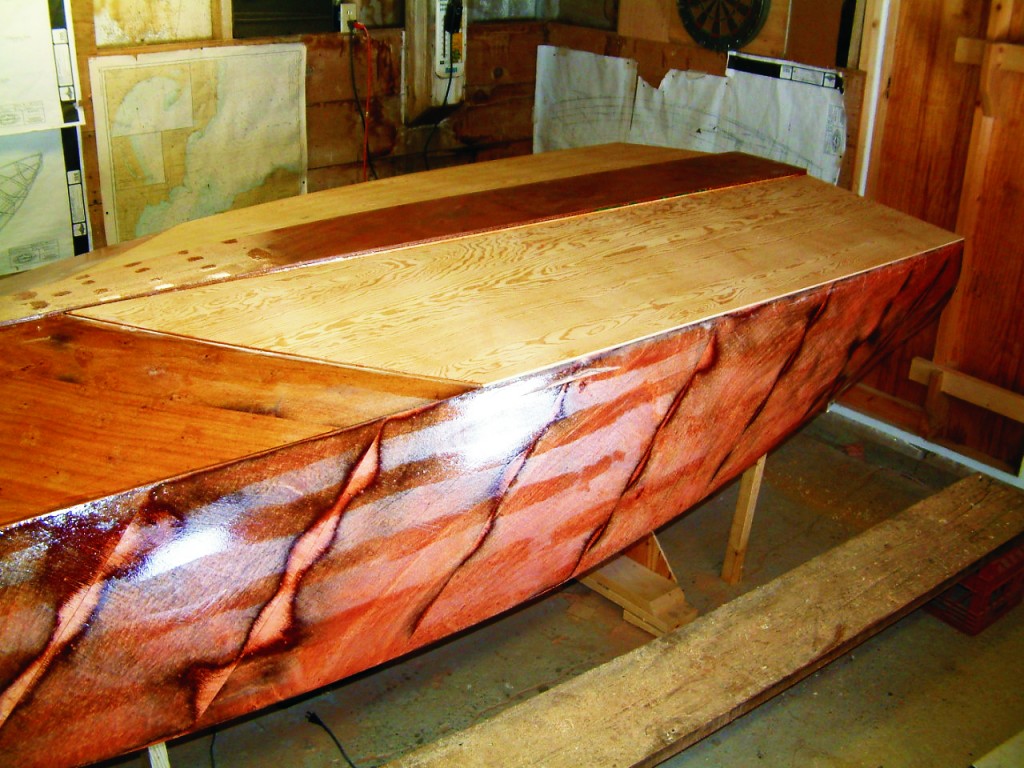
The bottom and topsides are faired and coated, ready for mahogany planking.
The fasteners ended up looking like 1″ by 1½” mirror clips, similar to those used to hold your bathroom mirror to the wall. These clips were made from scrap plywood, and since they would be under the plastic, the top edges were rounded off with a sander. I found that once one plank was butted tightly against another, using these clips along the “loose” edge was all that I needed to secure the plank. Prior to gluing and mounting the plank, I ran a strip of ½” double back tape around the perimeter of the plank being installed and made sure to seal down all the edges and overlaps tightly. Then I glued and clamped the plank. I then took a piece of ¼” nylon tubing and drilled small holes in it every 3″. I taped this loosely along the length of the plank. The tubing allowed the air to be removed from the extreme ends of the bag and was reusable.
Somewhere along the length of this tubing, I wrapped a piece of landscape fabric and taped it in place to form an “air bridge” from the tubing to the suction cup or vacuum port.
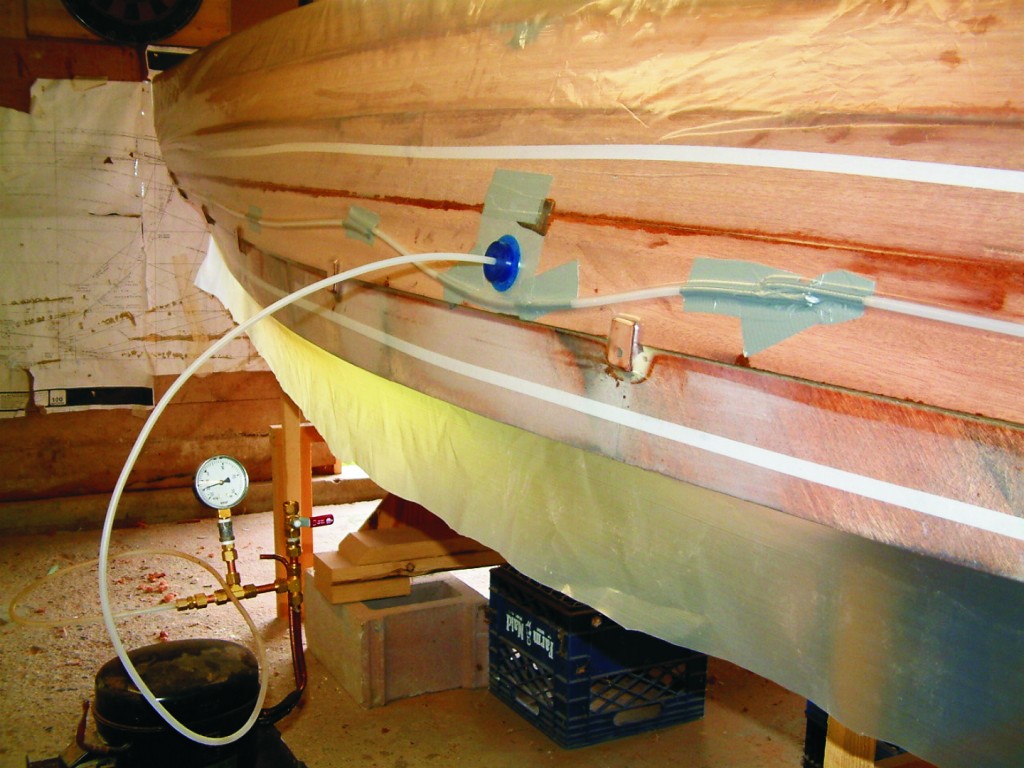
Each ¼” mahogany plank on the hull was clamped using vacuum bagging to avoid staples holes. An old dehumidifier compressor was rigged to pull up to 22″ Hg .
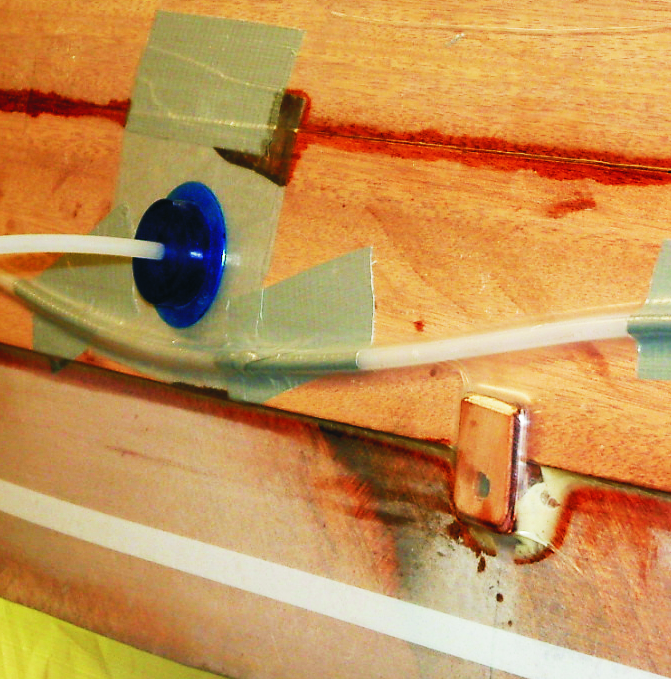
A closeup of the vacuum port and the clip used to hold the individual planks in position until the vacuum took over.
I used builder’s plastic for the bag. (Note: use the clear plastic, not the milky white variety as this type is too slippery.) This plastic does not stretch very much, so I had to get real creative when taping the end of the bag. After the bag was in place, I made a small “x” cut in the plastic at the fabric location and covered it with the suction cup. Then I started the pump and checked for leaks. I had forgotten to mark my frame and stringer locations on the plywood and would occasionally miss the frame with the screw, causing a leak. By the time I found this out, I was already committed to the job and needed to plug the leak. To do this, I crawled inside the hull, listened, and then ran my finger along the frame hull joints until I found the leak. Then I packed the leak full of plumber’s putty or bubble gum, whatever I could come up with. After the epoxy cured, I cleaned up the plank edge with a trim router and moved on to the next plank.
To supply that suction, I needed a vacuum pump. After searching the internet, I found several commercial units, ranging from $100 to $300. I knew someone had to have a cheaper solution. One kit-plane builder had the answer. Turns out that the solution had been sitting in my garage for years. I had an old Kenmore™ dehumidifier. The fan motor was burned out, but the compressor was still good. On the opposite side of that compressor was a vacuum, and that’s what I was interested in. I have had this unit pull up to 22″ Hg (inches of mercury), which is over 1,600 lb per sq ft. (To find out how to build a vacuum pump, visit The Cheap Little Sucker . Read all the links as they tell you what to look for when choosing a compressor. A good source for parts, vacuum gauge, suction cups, double-back tape, etc. is McMaster-Carr ; they offer fast service and excellent prices.)
Rascal’s interior
During the winter of 2004-2005, I constructed the interior, disassembled it, and brought it into the basement for finishing. I chose Interlux Goldspar™ polyurethane varnish for two reasons: 1) I wanted the scratch resistance of the hard finish and 2) Since dust was a constant problem, the hard finish allowed me to wet sand all the parts and then use automotive products to rub out and polish the final finish.
I lost some of the high gloss, but I also got rid of the dust flecks. This was a lot of extra work but worth it. I started sanding with 600-grit paper on a rubber block, very wet, then 800-grit, and finished with 1200-grit. All sanding and polishing have to be done within a single coat of varnish; if you sand through to a previous coat, no amount of polishing will make it blend and you will need to re-coat.
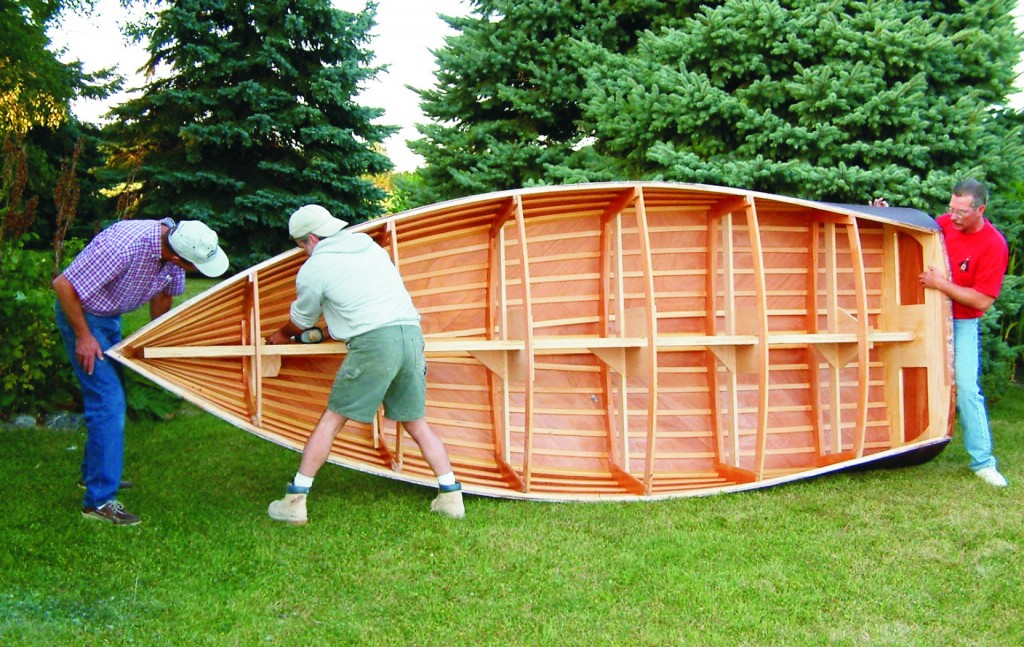
Rolling the hull to begin work on the deck was easy enough for three guys.
Deck construction used the same schedule as the topsides. The caulked seams were filled with WEST SYSTEM epoxy thickened with 406 Colloidal Silica Filler and then darkened with 423 Graphite Powder. This mixture was piped into each seam with a zipper-seal bag with a corner snipped off. Next, all deck hardware and stainless steel trim were fabricated, fitted, and installed. After the windshield brackets were installed, patterns were made for the ¼” Plexiglas™ windscreens.
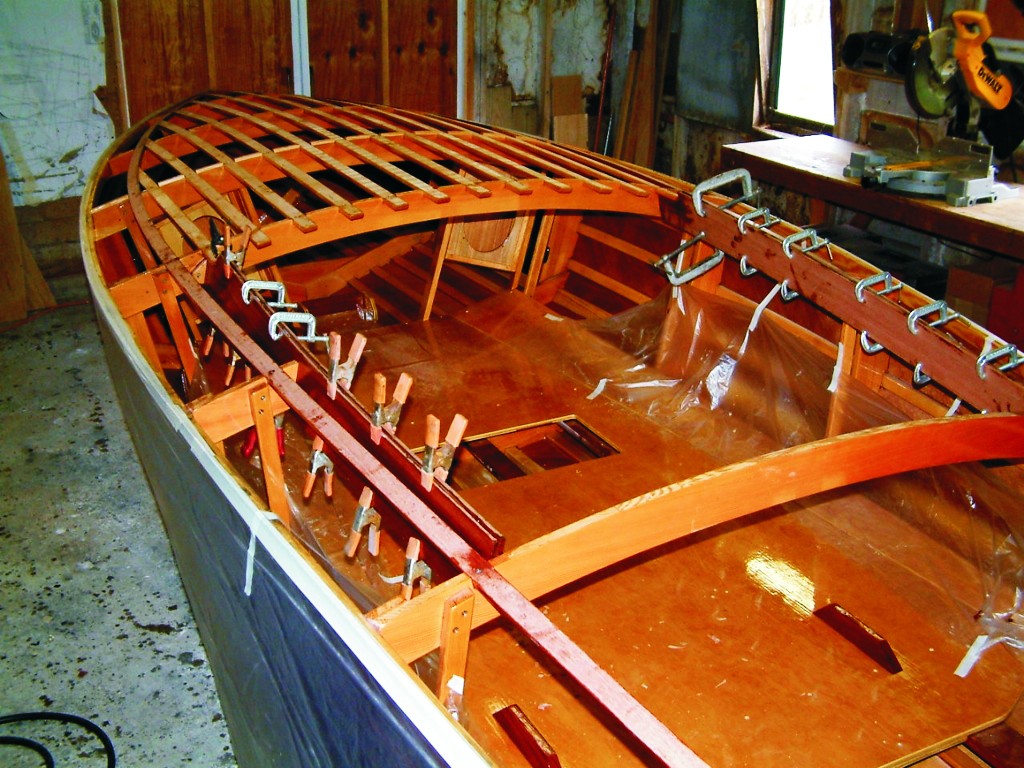
After Rascal’s floor was installed, the deck was framed. Spruce stringers will support 1 8″ Okoume plywood.
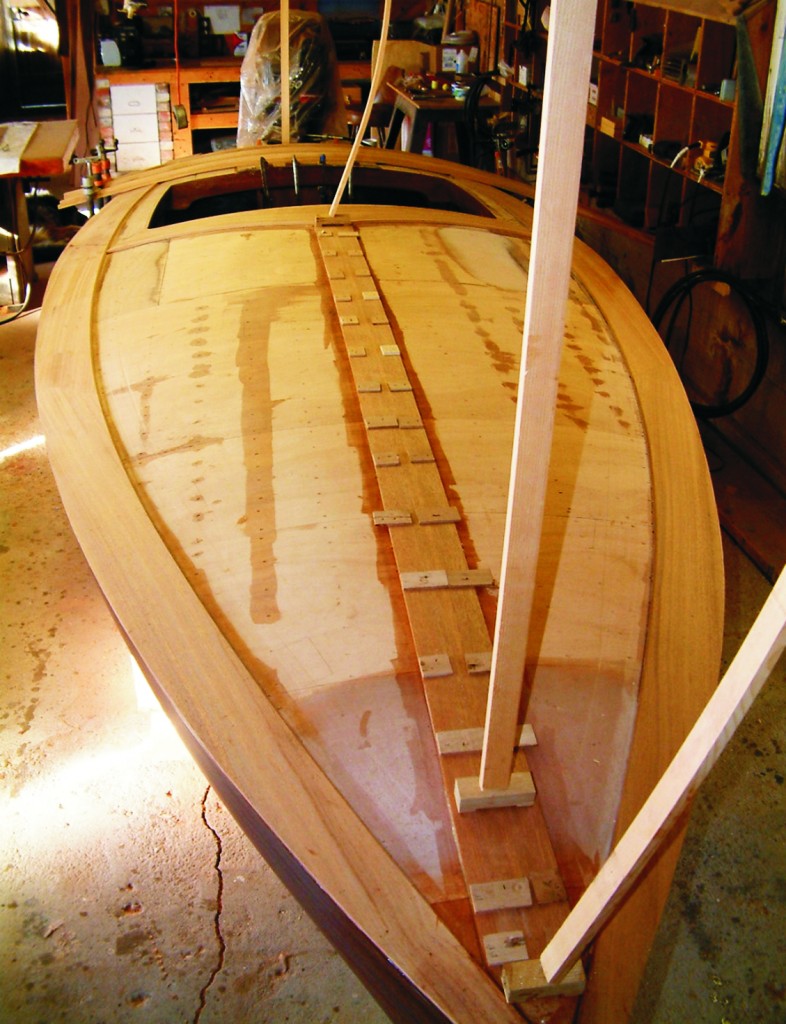
After a slight bit of fairing, the ¼” mahogany planking was installed. By using the right-sized braces, the roof provided some strategic clamping pressure.
When I was satisfied with all the fits, I removed everything and sent the windshield brackets and stem-head fitting off to the chromer. Be sure to send out this type of work as soon as possible; my work took five weeks and one part had to be sent back to be redone. Needless to say, that part was the last thing installed on the boat before launch.
Finishing Rascal
To finish the hull, I used Minwax™ oil stain, followed by a 6 oz layer of glass cloth and five coats of epoxy. Then I used six coats of Epifanes™ no-sand varnish and finished with two coats of Epifanes spar varnish. I found that I had to plane the sheer very carefully as the glass did not adhere as well as I would have liked. For that reason, I would not recommend the use of the Minwax oil stain under the epoxy. I used the same stain on the deck and there elected to go with an all varnish finish, 11 coats in all.
The RASCAL is a real head turner and gets a lot of attention wherever she goes. She took 1st place in the contemporary classic division at the 2005 Presque Isle Harbor Wooden Boat Show. The 4-stroke was initially a little heavy, which I corrected by mounting a hydrofoil to the engine. This made the trim much more effective throughout its range. Handling is very solid and predictable, with a top speed somewhere near 50 mph. Not bad for a fuel-sipping 60 hp motor.
Is she Van Dam quality? In my opinion, not quite. Then again, I’ve always been my own worst critic.
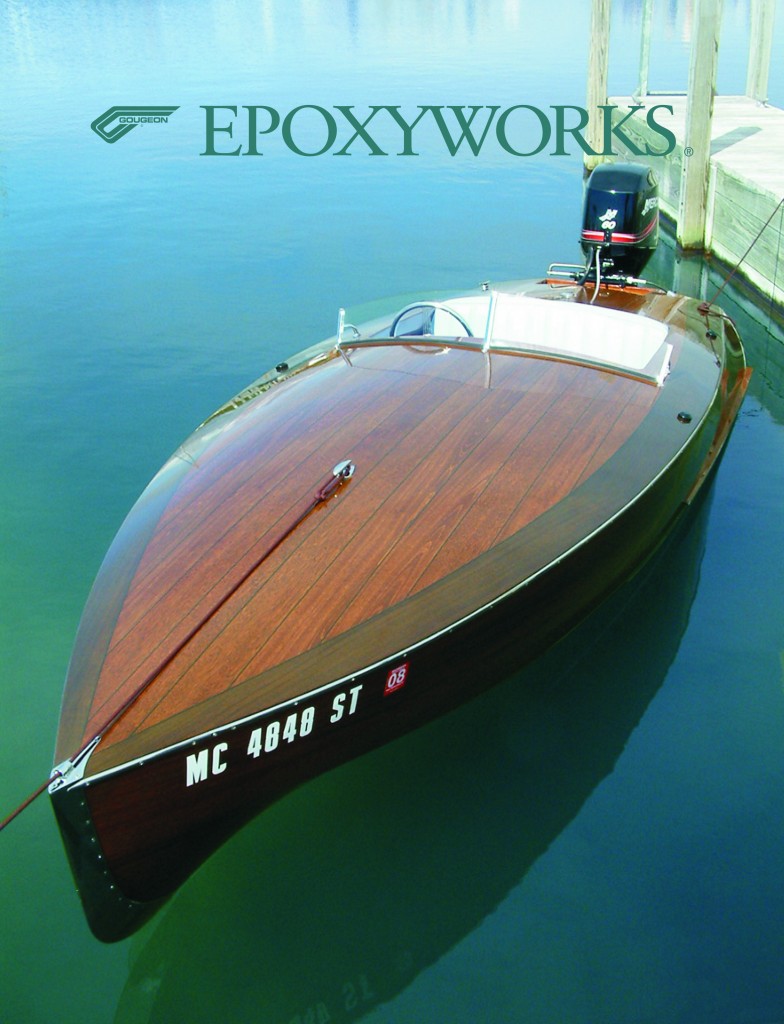
Rascal. Cover story, Epoxyworks #24
The Tropical Cruiser
Rascal was built for barefoot fun – for true adventure – in Indonesia’s far flung islands. Handcrafted from teak and ironwood by master Konjo craftsmen in Sulawesi, Rascal builds upon Indonesian boatbuilding heritage with the added comfort of contemporary interiors.
The five sumptuously furnished cabins sleep 10, providing ample space for families and friends to cruise Indonesia’s epic waters with the amenities of home.
Rascal’s capacious cabins are set across two expansive, above-water decks meaning brightly lit spaces with high ceilings, large windows and stunning views. Each air-conditioned cabin features an ensuite bathroom and natural teak floors. Each of the five cabins has its own flat screen TV with hundreds of movies and an interactive music system. Individually styled, the cozy rooms are an east-meets-west blend of influences creating cool, relaxing spaces. Ample storage and work spaces make guests feel at home on the water over extended journeys.
Rascal’s flexible, comfortable cabins offer a variety of options for group sleeping arrangements. The master suite on the upper deck with king bed opens onto a private balcony where lounge chairs allow private sun worshipping. There is one other double cabin on the upper deck, while the other three can be found on the main deck, including one furnished with bunk beds – perfect for children or the young-at-heart.
Dining and Lounge Facilities
Happy hour on board Rascal is a stylish and inimitable affair. Enjoy a cocktail made from Rascal’s own rum at the inviting indoor bar, which is located in the tastefully tropical lounge at the heart of the yacht. Rascal’s alfresco dining area on the main deck is shaded from the sun and optimally placed for that sea breeze. For panoramic views, head to the expansive 1280 square-foot roof deck; an ideal space for sunbathing and admiring sunsets.
Rascal’s private chefs follow curated menus from Bali’s famed Watercress restaurant to satisfy all palettes with the freshest Asian fusion cuisine. Proof & Company mixologists inspire the mouthwatering cocktail list. The crew’s warm hospitality brings elevated levels of service catering to guests’ every need wherever Rascal cruises.
Explore and Play
Rascal’s PADI Instructor leads world-class diving excursions in Indonesia’s most biodiverse habitats. With two RIB tenders, unlimited water sports are included in all charters. Rascal’s enviable toy arsenal includes waterskis, wakeboards and a banana boat guaranteed to entertain thrill-seeking guests. For more leisurely activity options, Rascal’s kayaks, snorkel sets or fishing gears are ready whenever you are to explore.
On land, hike through jungles in hope of spotting rare birds or wander through local villages to witness cultures unchanged by time. Trek up active volcanoes or sunbathe on white sandy beaches. On Rascal, the world is your oyster.
Rascal Private Charters
Rascal was fashioned specifically for bespoke cruising adventures around Indonesia’s archipelago. Dream excursions are custom designed for guests down to every last personal detail on a private charter. Operating with just one rule, ‘if coconuts don’t grow there, she won’t go there,’ Rascal is for creating memories with loved ones in exotic, tropical lands.
Rascal cruises to Komodo National Park from May to October and Raja Ampat from November to April. We create bespoke itineraries to suit a variety of preferences in these regions, and guests may also request to sail anywhere between Bali and the Banda Islands at a reasonable relocation fee upon request.
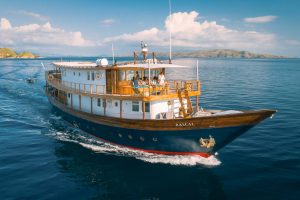
- All gourmet meals and non-alcoholic beverages
- Airport transfers to and from port
- National park fees
- Services of English-speaking expedition leader
- Service of the crew
- Personal laundry services
- Activities and use of all water sports equipment
- Diving for certified divers
- Alcoholic beverages
- PADI dive certification courses
- Dive insurance
- Trip cancellation insurance
- Medical and evacuation insurance
- Repositioning fees
- Crew gratuities
Specification
General information, water sports.

Your Private Charter on Rascal
Rascal was built for adventures prioritizing barefoot fun in Indonesia’s far flung islands. Her supremely comfortable interiors recall a floating beach house ideal for exploring remote habitats on your own terms.
To discuss planning the ultimate itinerary on Rascal, please get in touch.

Suggested Itineraries
The last paradise.
- Starter Charter
The Westward Passage
Private whale shark experience.
- To The Land of Dragons
Browse Yachts
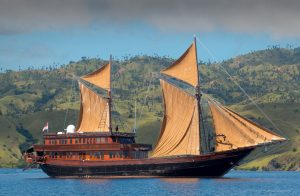
Request Rascal Brochure
Please fill in the form below to have a Rascal .pdf brochure emailed to you
We will personally email you the brochure requested and look forward to any follow up questions.
Enquire about Rascal
Thank you for contacting us! We will get back to you as soon as possible.
Sign up to receive exclusive offers and stay current on yachting in Indonesia.
Check your inbox or spam folder to confirm your subscription.
- Browse All Superyachts
- Si Datu Bua
- Mutiara Laut
- Ocean Pure 1
- Kudanil Explorer
- Browse All Luxury Yachts
- Alila Purnama
- Browse All Liveaboard Yachts
- The Seven Seas
- Dewi Nusantara
- Browse All Itineraries
- Eastern Expedition
- Ultimate Family Adventure
- Whale Sharks in West Papua
- Crossing the Wallace Line
- Private Surf Safari
- Landmark Expedition
- Extreme Komodo
- Browse All Destinations
- Komodo National Park
- Cenderawasih Bay
- Phuket, Thailand
- East Nusa Tenggara
- Spice Islands
- Video Gallery
- Broker Services
- Charter Specialists
- Villas & Resorts
- Travel Support
- Expert Guides
- Private Aviation
- COVID-19 Travel Guide
- Special Offers
We look forward to staying in touch.
Great choice! Your favorites are temporarily saved for this session. Sign in to save them permanently, access them on any device, and receive relevant alerts.
- Sailboat Guide
1981 14' Spindrift Rascal
- Description
Seller's Description
Very easy to sail and super light Rascal Sailboat. Both jib and main sails are in very good condition. Super easy and fast to set up on the beach.
You can tow it with a regular sedan (super light construction).
Rig and Sails
Auxilary power, accomodations, calculations.
The theoretical maximum speed that a displacement hull can move efficiently through the water is determined by it's waterline length and displacement. It may be unable to reach this speed if the boat is underpowered or heavily loaded, though it may exceed this speed given enough power. Read more.
Classic hull speed formula:
Hull Speed = 1.34 x √LWL
Max Speed/Length ratio = 8.26 ÷ Displacement/Length ratio .311 Hull Speed = Max Speed/Length ratio x √LWL
Sail Area / Displacement Ratio
A measure of the power of the sails relative to the weight of the boat. The higher the number, the higher the performance, but the harder the boat will be to handle. This ratio is a "non-dimensional" value that facilitates comparisons between boats of different types and sizes. Read more.
SA/D = SA ÷ (D ÷ 64) 2/3
- SA : Sail area in square feet, derived by adding the mainsail area to 100% of the foretriangle area (the lateral area above the deck between the mast and the forestay).
- D : Displacement in pounds.
Ballast / Displacement Ratio
A measure of the stability of a boat's hull that suggests how well a monohull will stand up to its sails. The ballast displacement ratio indicates how much of the weight of a boat is placed for maximum stability against capsizing and is an indicator of stiffness and resistance to capsize.
Ballast / Displacement * 100
Displacement / Length Ratio
A measure of the weight of the boat relative to it's length at the waterline. The higher a boat’s D/L ratio, the more easily it will carry a load and the more comfortable its motion will be. The lower a boat's ratio is, the less power it takes to drive the boat to its nominal hull speed or beyond. Read more.
D/L = (D ÷ 2240) ÷ (0.01 x LWL)³
- D: Displacement of the boat in pounds.
- LWL: Waterline length in feet
Comfort Ratio
This ratio assess how quickly and abruptly a boat’s hull reacts to waves in a significant seaway, these being the elements of a boat’s motion most likely to cause seasickness. Read more.
Comfort ratio = D ÷ (.65 x (.7 LWL + .3 LOA) x Beam 1.33 )
- D: Displacement of the boat in pounds
- LOA: Length overall in feet
- Beam: Width of boat at the widest point in feet
Capsize Screening Formula
This formula attempts to indicate whether a given boat might be too wide and light to readily right itself after being overturned in extreme conditions. Read more.
CSV = Beam ÷ ³√(D / 64)
Spin.: 160 sq. ft. A later, slightly modified version was available called the RASCAL II.
This listing is presented by SailboatListings.com . Visit their website for more information or to contact the seller.
View on SailboatListings.com
Embed this page on your own website by copying and pasting this code.
- About Sailboat Guide
©2024 Sea Time Tech, LLC
This site is protected by reCAPTCHA and the Google Privacy Policy and Terms of Service apply.
March / April Issue No. 297 Preview Now
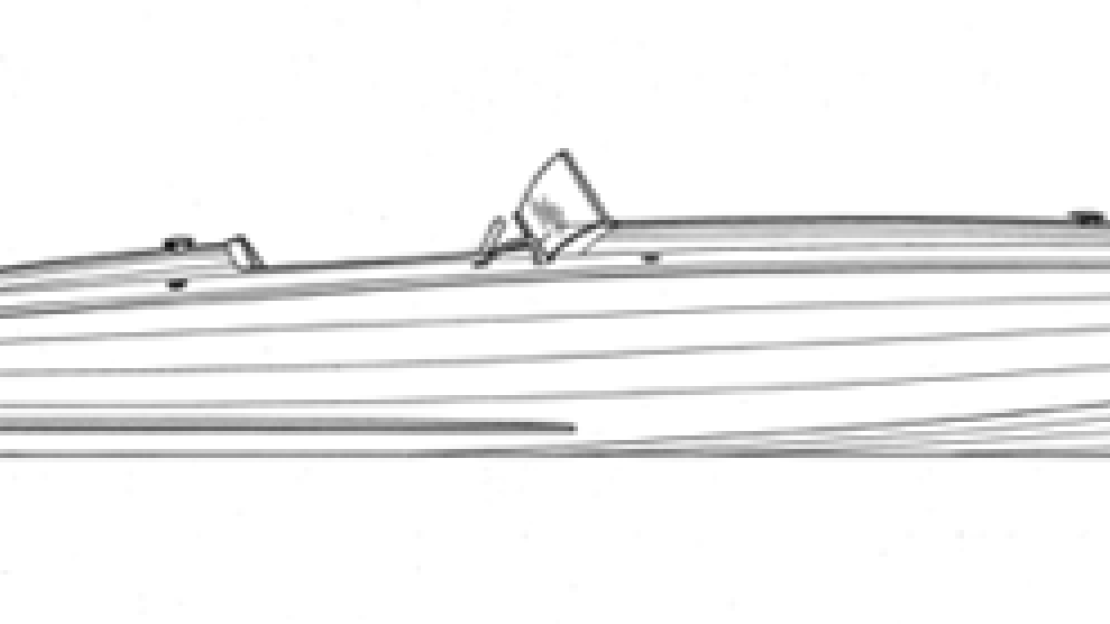
Motorboats - Outboard
14' 10" runabout, rascal.
A modified V-bottom, with constant deadrise in its after sections. Construction: Plywood and Mahogany over sawn frames. Alternative construction: Cold-molded, double laminated plywood. No lofting is required. Plans include 8 sheets.
Design Specifications
The WoodenBoat Store Post Office Box 78 Brooklin, Maine 04616 USA Phone: 1.800.273.7447

ACCESS TO EXPERIENCE
Subscribe today.
Publishing dynamic editorial content on boat design construction, and repair for more than 40 years.
1 YEAR SUBSCRIPTION (6 ISSUES)
Print $39.95, digital $28.00, print+digital $42.95, from plans & kits.
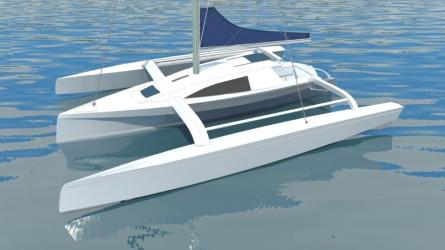
Almaguin 500
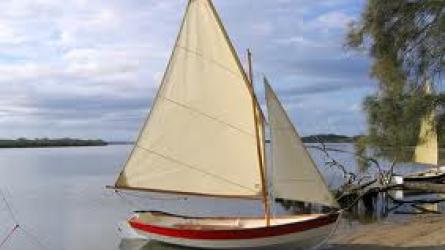
12' 10" Pooduck Skiff

From the Community
Boat launchings.
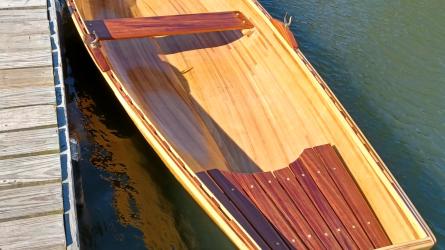
My first boat and first build
"If you want something nice, build it yourself." I've wanted a boat most of my life but was never
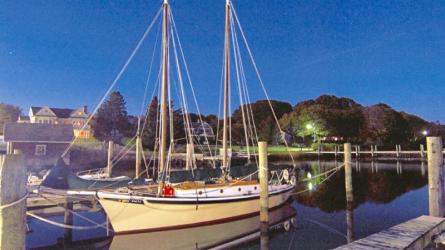
Restored Atkin Schooner GAFF RIGGED 1957 Billy's last Design
33′ Atkin fully restored 2012-2017 Schooner. Ready to cruise again to Maine.
Pre 1905 Warren Cole Adirondack Guideboat LOA 16′, 42″ beam
Restored in ME by Jonathan Minott (seen in WB "Launchings" July/Aug 2009).
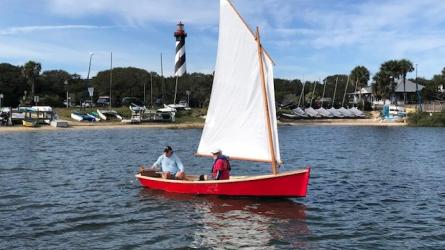
Chesapeake Crab Skiff
Beautiful 15' Crab Skiff Sailboat. Built at the St. Augustine Lighthouse. $5,000.
Let us plan your perfect voyage
See the best of Komodo and Raja Ampat all in one trip by hopping from one boat to another in Rascal style.
Call us on +65 80852381
One of our concierge’s will be in touch to arrange your voyage.
ACCESS THE INACCESSIBLE
Discover the untouched, experience the authentic, the best of southeast asia.
Researched and curated to your needs.
FREEDOM TO EXPLORE SAFELY
Specialist local crew and international team.
LAID BACK LUXURY
Relaxed and genuine. Every step of the journey.
THE ULTIMATE LUXURY BUCKET LIST TRIP FOR SOUTHEAST ASIA
“ Rascal does party-time and seafaring adventure with verve. There are only a score of really top-notch charter yachts like Rascal, offering a crew member to match every guest; carrying their own scuba equipment, dive instructor, rib tenders and every toy imaginable for even the lowest-attention-span, highest-net-worth, adrenalin-seeking client."

THE RASCAL PROMISE
More assurance.
Explore safely and experience fully with our expert local Crew and international Voyage Managers.
MORE CULTURE
Whatever you’re after: remote beaches, rare wildlife, or an ancient wellness ritual, we constantly research the region, so you don’t have to.
MORE CRAFTED
We tailor our bespoke itineraries around you, and our 1: 1 guest to Rascal crew ratio means that all your needs are always catered for.
A wealth of on-board, on-sea or on-shore activities, do as little as you want or as much as you would like.
MORE EXCEPTIONAL CUISINE
Fresh locally-sourced international cuisine with a local twist.
MORE DISCOVERY
Asia is diverse. Explore different terrains on land and sea, magnificent wildlife and communities covering multiple destinations in a single trip.
hbspt.cta._relativeUrls=true;hbspt.cta.load(6243413, '9f25a7ef-d381-4775-924e-99b5a626becd', {"useNewLoader":"true","region":"na1"}); EXPLORE MORE PLAY MORE TASTE MORE DISCOVER MORE be more rascal

DESTINATIONS WITH SOUL
%20(1).png)
“Of the thousands of exotic locations one can visit across the globe, few offer the chance to truly experience the authenticity and character of a destination. Rascal Voyages was born from the desire to explore what really lies beneath; to discover destinations in their raw, natural habitats, just as they are. To uncover destinations with soul."
Steve Ebsworth (Co-founder), Rascal Voyages
CABIN OR PRIVATE VOYAGES
Enjoy the flexibility of travelling solo, as a couple, or share the yacht with fellow travellers. We design our voyages to place like-minded guests together.

CHOOSE DESTINATION
Choose cabin or private voyage, select preferred dates, get packing, travel packing tips.
Get our Rascal Voyages A-Z pre-charter information list emailed to you to help you prepare for the perfect Rascal Voyages adventure.
What a rascal experience feels like
Connection, authenticity, luxury.
Break free from the ordinary, embrace the extraordinary. View some of our guest experiences.
recent voyages
- Motorcycles
- Car of the Month
- Destinations
- Men’s Fashion
- Watch Collector
- Art & Collectibles
- Vacation Homes
- Celebrity Homes
- New Construction
- Home Design
- Electronics
- Fine Dining
- Baja Bay Club
- Costa Palmas
- Fairmont Doha
- Four Seasons Private Residences Dominican Republic at Tropicalia
- Reynolds Lake Oconee
- Scott Dunn Travel
- Wilson Audio
- 672 Wine Club
- Sports & Leisure
- Health & Wellness
- Best of the Best
- The Ultimate Gift Guide
- Forget Conventional Yachts. You Can Now Explore Southeast Asia on This Grand Indonesian-Style Boat.
Luxury charter company Rascal Voyages is renowned for its edge-of-the-earth adventures around remotest Indonesia.
Lee cobaj's most recent stories.
- Forget Conventional Yachts. You Can Explore Southeast Asia on This Grand Indonesian-Style Boat.
- What It’s Like to Stay at the Langham Jakarta, an Explosion of English Excellence in Bustling Indonesia
- Share This Article

Related Stories
How a little-known dublin book fest transformed into an a-lister summer favorite.
- What It’s Like to Stay at Ashford Castle, the Guinness Family’s Former Country Retreat in Ireland
All the Sea’s a Stage: This Bonkers Entertainment Venue Aims to Bring Live Music and More to the Water
When Rascal launched in 2017, the British, Bali-based founder, Steve Ebsworth, raised the sun-sea-and-sand bar with his innovative take on the traditional Indonesian sailboat experience. The first things to go were the actual sails, which require huge amounts of valuable deck space and are barely ever hoisted nowadays. This rejigging allowed for all five cabins—decorated in warm woods and soft whites with tasteful pops of Indigenous art and handwoven fabrics—to be positioned above deck, including a large primary suite with wraparound windows on the top deck. Space for sunning was moved to the roof deck, which multitasks as a breezy spot for sundowners and canapés as the equatorial sun descends into an ocean of molten gold, or a place to gaze at the Milky Way under a perfectly clear sky.

Next year, the company will expand further with its launch of Rogue , venturing into Malaysian and Thai waters for the first time with what’s bound to be an equally inspiring journey rambling through the jade-green Andaman Sea, from Langkawi to hard-to-reach Tarutao National Marine Park and on to Phuket. “We’re planning a few surprises along the way,” adds Khadijah. You’d expect nothing less from a Rascal.
Prices start from $28,475 per person based on 7 nights aboard Rascal Voyages ’s newly launched Rebel Yacht, with a First Class round-trip flight from New York. Price includes private transfers, meals (excludes alcohol), private guides and endless activities onboard. Price based on 10 people traveling. For more information, please visit www.scottdunn.com/us .
Read More On:
More destinations.

Disney Superfans Are Spending Tens of Thousands of Dollars at the Parks. Here’s What They’re Buying.

Delta Is Opening Its First Premium Lounge at N.Y.C.’s JFK Airport This Summer

Culinary Masters 2024
MAY 17 - 19 Join us for extraordinary meals from the nation’s brightest culinary minds.
Give the Gift of Luxury
Latest Galleries in Destinations

Oceaya in Photos

22 Renowned Travel Specialists Who Can Make Your Dream Vacation a Reality
More from our brands, the 12 best gel nail polishes for a professional, chip-free manicure, mlb’s highest-paid players 2024: ohtani on top despite $2m salary, ewan mcgregor says intimacy coordinator was ‘necessary’ to film sex scenes with wife mary elizabeth winstead: ‘it’s also about the crew’, andrew crispo, new york art dealer who became a tabloid sensation, dies at 78, the best yoga mats for any practice, according to instructors.

IMAGES
VIDEO
COMMENTS
A boat with a BN of 1.6 or greater is a boat that will be reefed often in offshore cruising. Derek Harvey, "Multihulls for Cruising and Racing", International Marine, Camden, Maine, 1991, states that a BN of 1 is generally accepted as the dividing line between so-called slow and fast multihulls.
The Rascal 14 is a recreational sailboat, built predominantly of fiberglass, with teak wood trim. It has a fractional sloop rig with black-colored, hard-coated aluminum spars and a tabernacle-mounted mast. The hull has a spooned plumb stem, a vertical transom, a transom-hung rudder controlled by a tiller and a retractable centerboard mounted in ...
A tall person could reach over the side and touch the water as it rushed aft at better than 50 mph. Memories of my first ride in RASCAL still raise goose bumps after 15 years.At 15' in length and weighing about 1,000 lbs with a full fuel tank and cockpit, RASCAL is a cheeky little boat— "pleasantly mischievous" is one of the ways Merriam ...
Rascal 14 is a 14′ 5″ / 4.4 m monohull sailboat designed by Ray Greene and built by Ray Greene & Co. starting in 1961. ... The lower a boat's ratio is, the less power it takes to drive the boat to its nominal hull speed or beyond. Read more. Formula. D/L = (D ÷ 2240) ÷ (0.01 x LWL)³ D: Displacement of the boat in pounds. LWL: Waterline ...
Description: Sailing my 1960's vintage Rascal sailboat on a late summer afternoon. I would like to have captured some more exciting footage but this particu...
hopscotch. New Member. According to Harry Milling an employee and sailmaker for Ray Greene, Rascal and its bigger brother Rebel (16) were originally manufactured by Rebel Industries in Jackson, Michigan. Ray Greene was doing a college thesis in 1948 in conjunction with Owens Corning using honeycombed fiberglass.
14 Rascal by Spindrift 1980. One Design Centerboard Dinghy Fractional Sloop Rig Seats 4 adults. 6 Beam 3 Draft. ADDITIONAL: ... The higher a boat's D/L ratio, the more easily it will carry a load and the more comfortable its motion will be. The lower a boat's ratio is, the less power it takes to drive the boat to its nominal hull speed or ...
Boat Name: Rascal 14: Manufacturer: Ray Greene: Hull Type: Daysailor: LOA: 14'5" (4.4m) Beam: 6'0" (1.83m) Weight: 400 (181.8kg) Ballast (kg) Keel Type: centerboard
DetailsThe Rascal will move well in a light breeze but it is also rugged enough to handle heavy wind and surf. Plenty of room in the cockpit for four adults and comfort for the family. Very simple and easy to rig and can be towed by a compact car. LOA 14'5" LWL 13'10" Beam 8' Draft up 4", down 3' Total Sail Area 140 sq. ft. Main 100 sq. ft. Jib 40 sq. ft. Seating 4 adults Trailering Weight 400 ...
Immersion rate. The immersion rate is defined as the weight required to sink the boat a certain level. The immersion rate for Rascal 14 is about 53 kg/cm, alternatively 302 lbs/inch. Meaning: if you load 53 kg cargo on the boat then it will sink 1 cm. Alternatively, if you load 302 lbs cargo on the boat it will sink 1 inch.
The Rascal 14 is a recreational sailboat, built predominantly of fiberglass, with teak wood trim. It has a fractional sloop rig with black-colored, hard-coated aluminum spars and a tabernacle-mounted mast.
Short video of 14' Rebel Rascal Sailboat sailing.
Rascal was built by Brooklin Boat Yard and launched in July of 2020. She is a 50-foot, Jim Taylor-designed, racing/cruising sloop and draws her lineage directly from previous Taylor-designed/BBY-built 49-footers Dreadnought and Blackfish.. While changes and sailing focus of Blackfish were to make her more of a racer than her predecessor, Rascal's evolutionary coin was flipped with a return ...
This new Brooklin Boat Yard-built, 50-foot, Jim Taylor-designed, racing / cruising sloop draws its lineage directly from previous Jim Taylor 49-footers DREADNOUGHT and BLACKFISH. RASCAL has enough in the way of evolutionary design changes and direction of sailing focus to warrant placing RASCAL in its own species, genus, and name within the ...
Not that it took 15 years to build; it was more like a year and a half. I first saw a photograph of RASCAL and decided right then, if I ever build a boat, this is the one. RASCAL was a new design by Ken Basset for a modified V-bottom 14'10" runabout with a beam of 5'4″ and hull weight of 420 pounds. For the next 15 years, RASCAL became ...
14 Rascal by Spindrift 1980. One Design Centerboard Dinghy Fractional Sloop Rig Seats 4 adults. ADDITIONAL: 14' Fractional Sloop Rig Mast Height 24' High Performance Features Generous Storage Under Foredeck Hand-Laid Fiberglass Exterior One Design w/Large Fleet Enclosed Bow Locker Foam Flotation Under Seats Recessed Foredeck Single Axle ...
DetailsSew it yourself! Rascal 14 Main Sail Kit lets you make your own mainsail. This kit is made from 4 oz. white Dacron® crosscut panels with three leech battens and boltrope on the luff and foot.Computer plotted with seaming and hem lines plotted right on the cloth, this sail kit can be made on a home sewing machine. All panels and patches are computer cut and ready for basting and sewing ...
Rascal was built for adventures prioritizing barefoot fun in Indonesia's far flung islands. Her supremely comfortable interiors recall a floating beach house ideal for exploring remote habitats on your own terms. To discuss planning the ultimate itinerary on Rascal, please get in touch. Request Brochure Rascal Enquire About Rascal +62 811 88 ...
RASCAL is a 40' 9" Racing Sailboat built by CARROLL MARINE and delivered in 1998. Photos and specifications available. Skip to content. Search Vessels. Used. Used Yachts; Used Boats; New. ... RASCAL 1998 CARROLL MARINE FARR 40 ONE-DESIGN Racing Sailboat Yacht MLS #401923 < Back to search Overview Features Details Gallery. Call Broker Email Broker.
This ratio assess how quickly and abruptly a boat's hull reacts to waves in a significant seaway, these being the elements of a boat's motion most likely to cause seasickness. Read more. Formula. Comfort ratio = D ÷ (.65 x (.7 LWL + .3 LOA) x Beam 1.33) D: Displacement of the boat in pounds; LWL: Waterline length in feet; LOA: Length ...
Motorboats - Outboard. 14' 10" Runabout, RASCAL. A modified V-bottom, with constant deadrise in its after sections. Construction: Plywood and Mahogany over sawn frames. Alternative construction: Cold-molded, double laminated plywood. No lofting is required. Plans include 8 sheets.
"Rascal does party-time and seafaring adventure with verve. There are only a score of really top-notch charter yachts like Rascal, offering a crew member to match every guest; carrying their own scuba equipment, dive instructor, rib tenders and every toy imaginable for even the lowest-attention-span, highest-net-worth, adrenalin-seeking client."
When Rascal launched in 2017, the British, Bali-based founder, Steve Ebsworth, raised the sun-sea-and-sand bar with his innovative take on the traditional Indonesian sailboat experience.The first ...